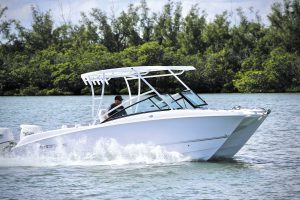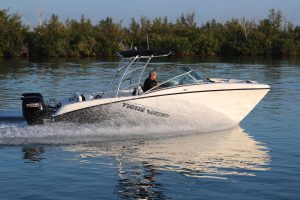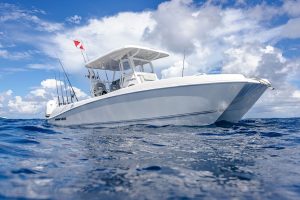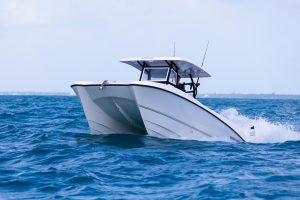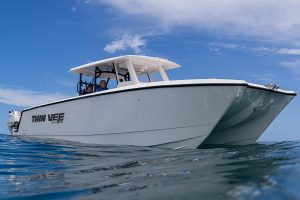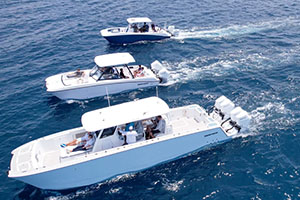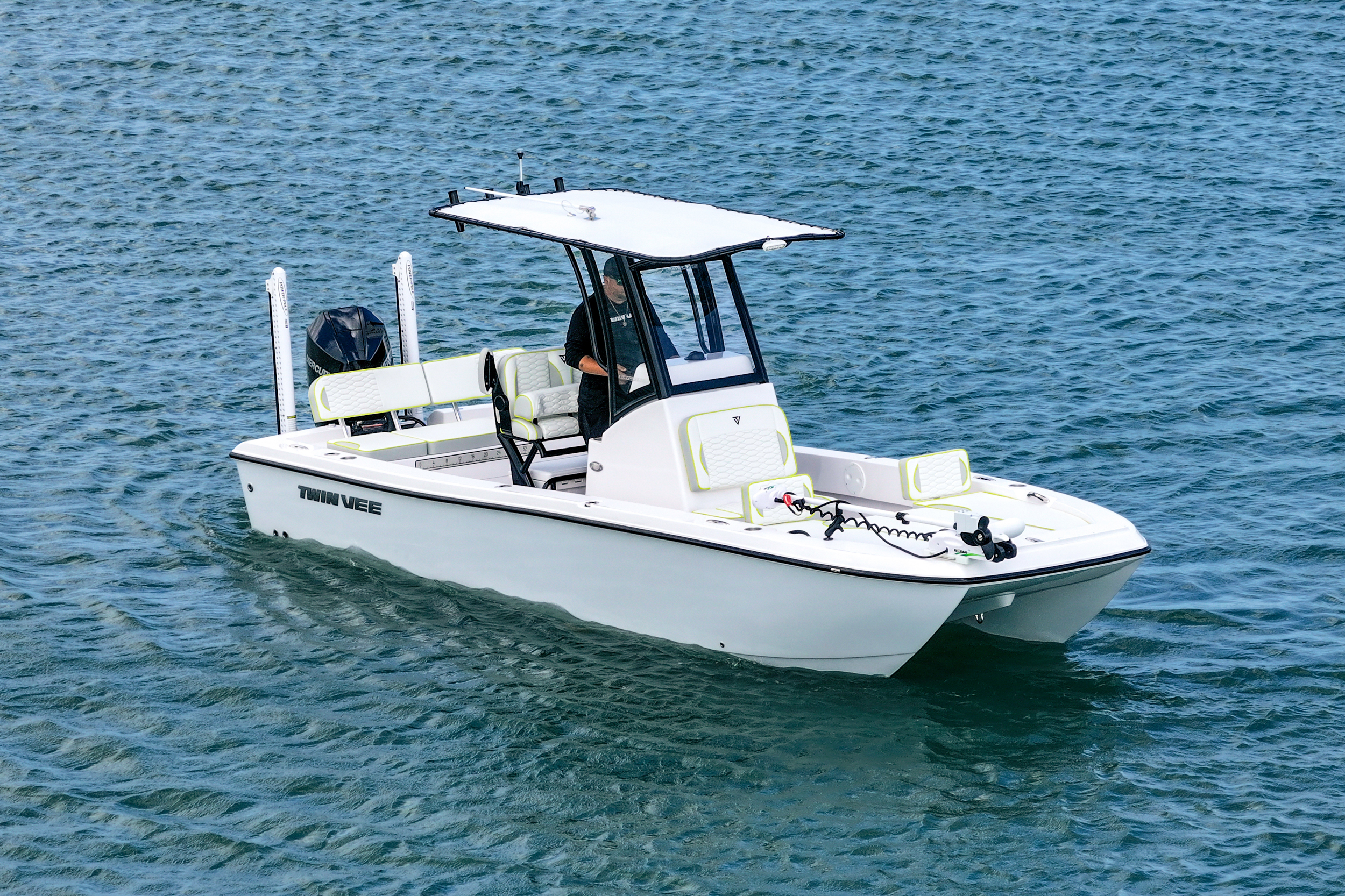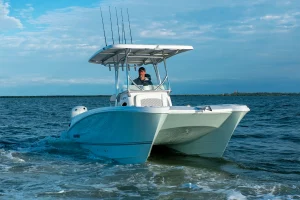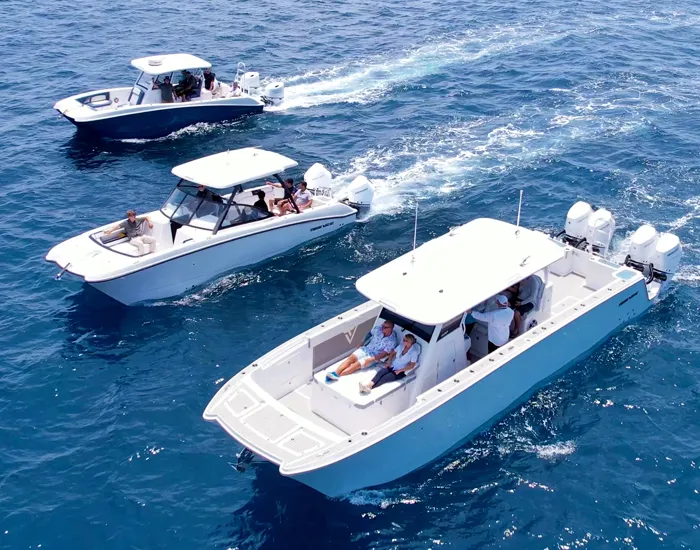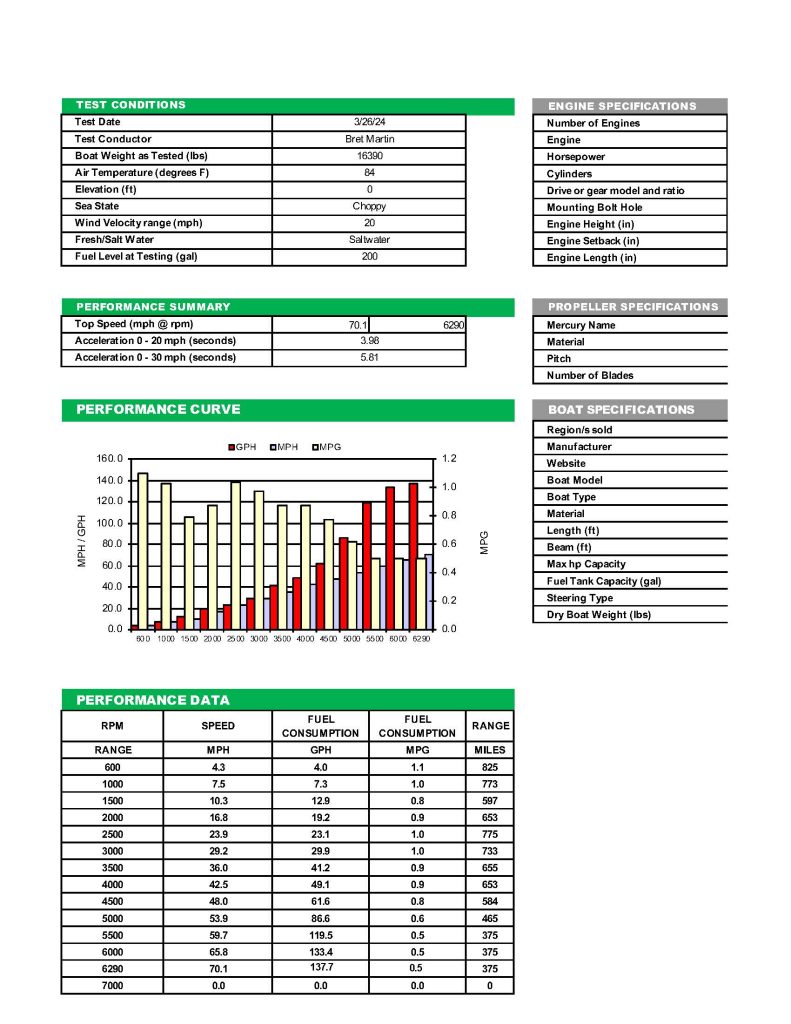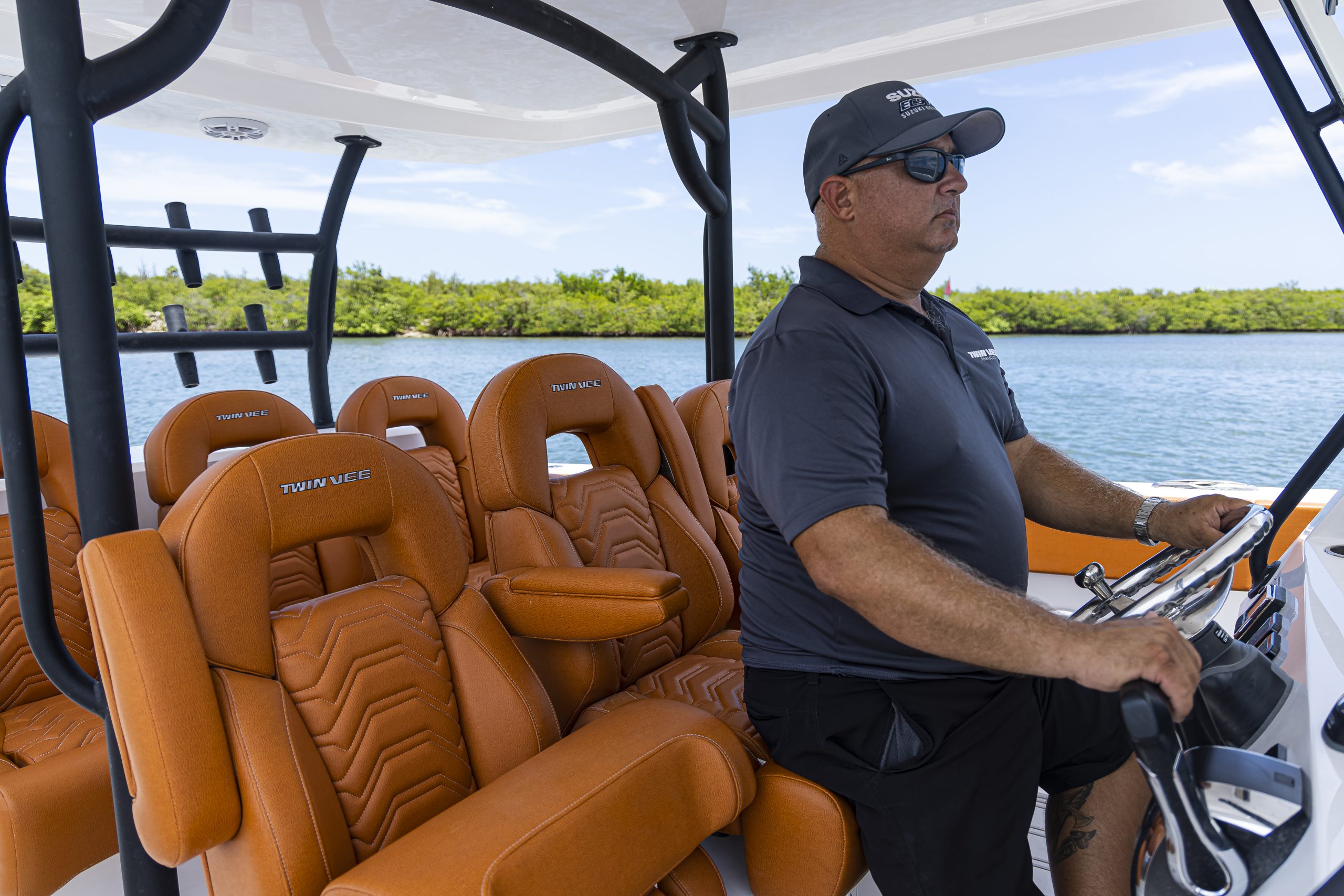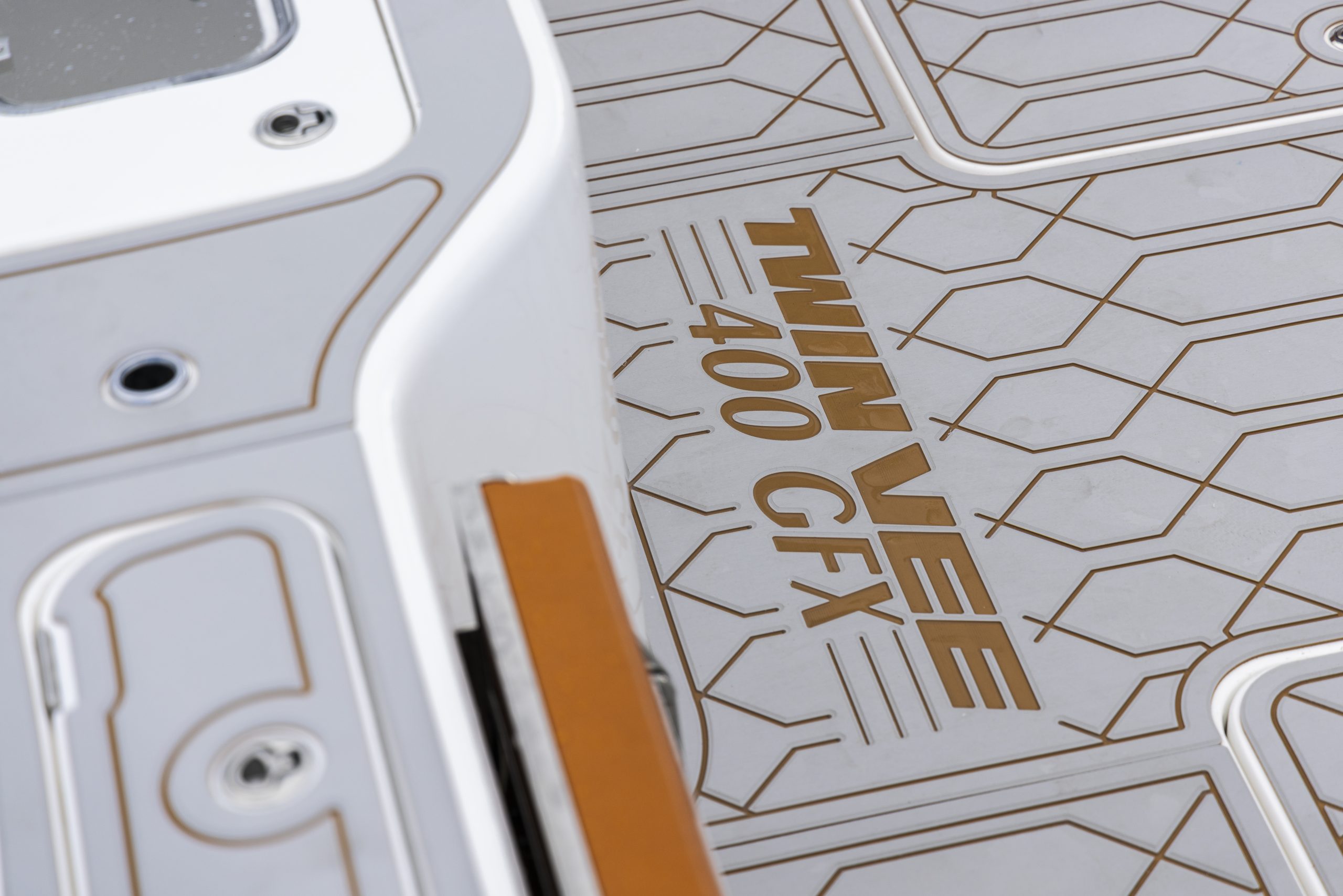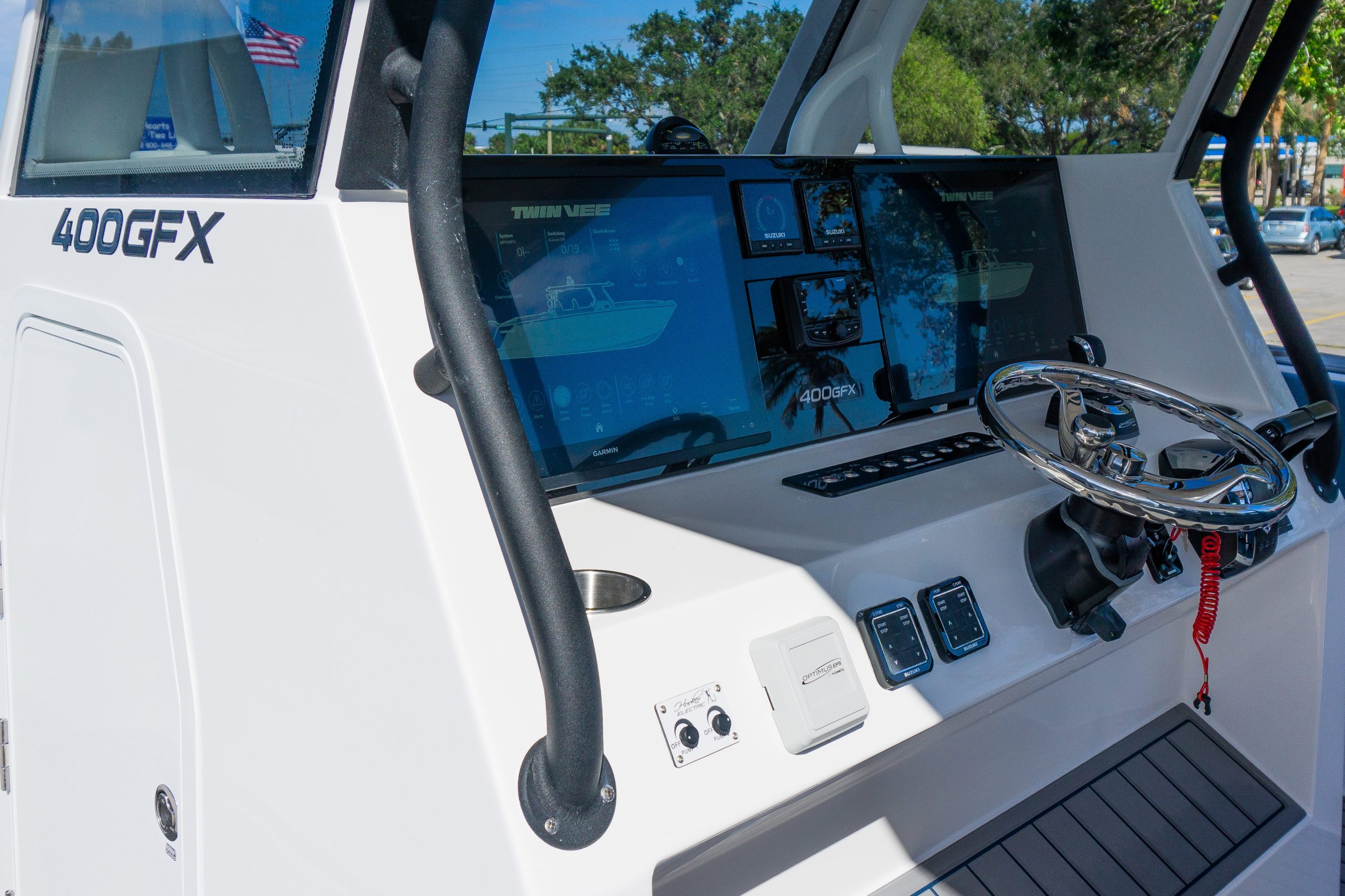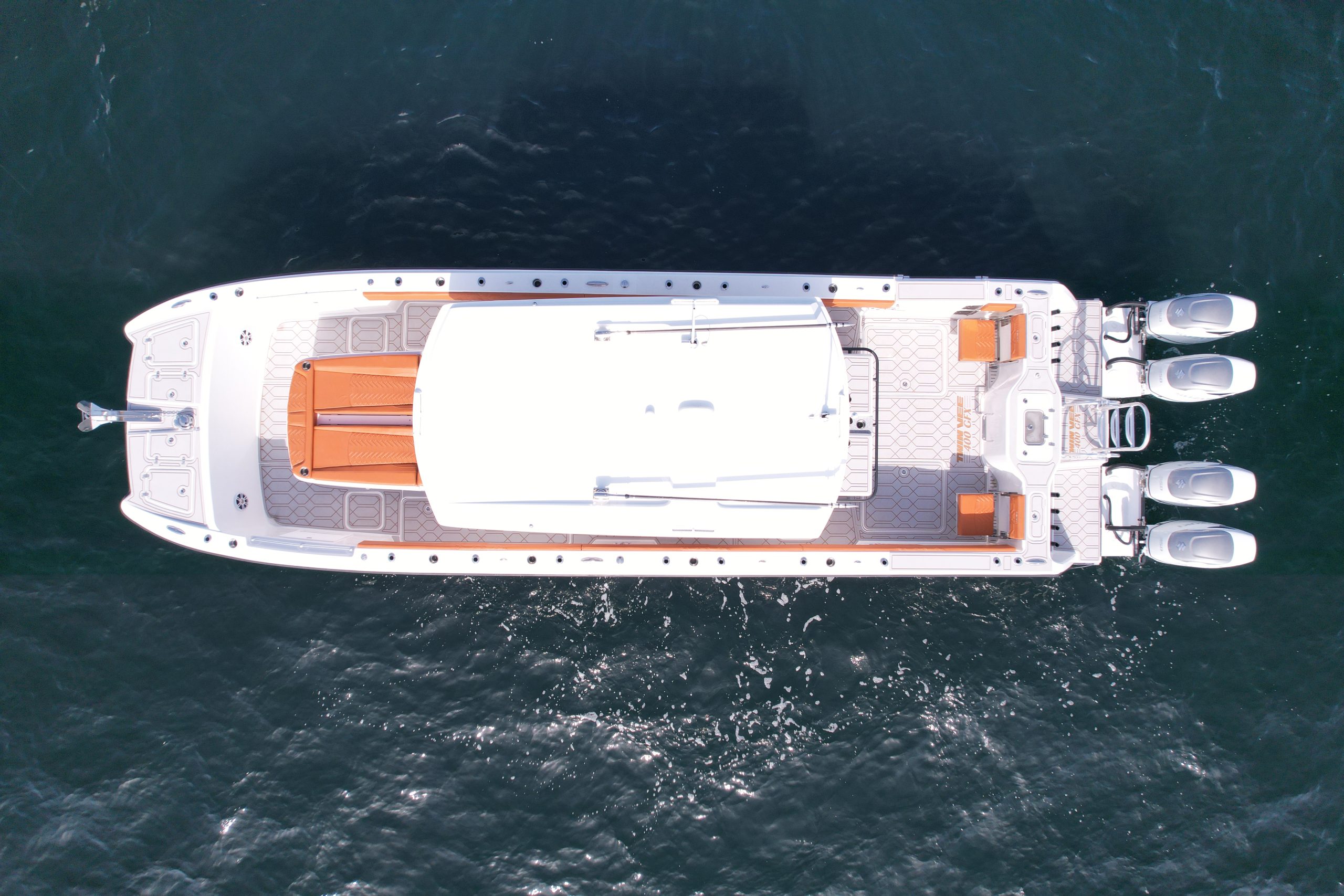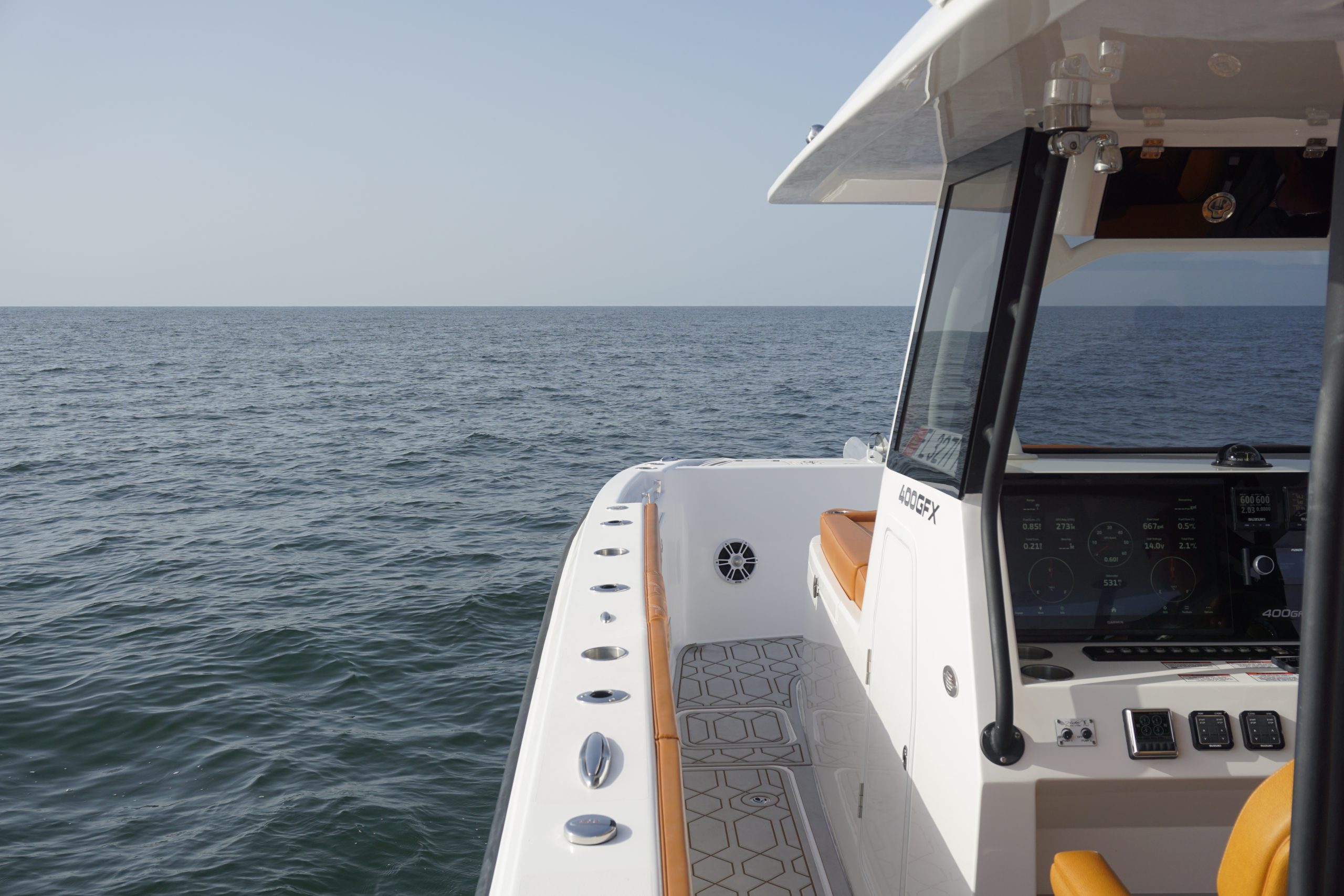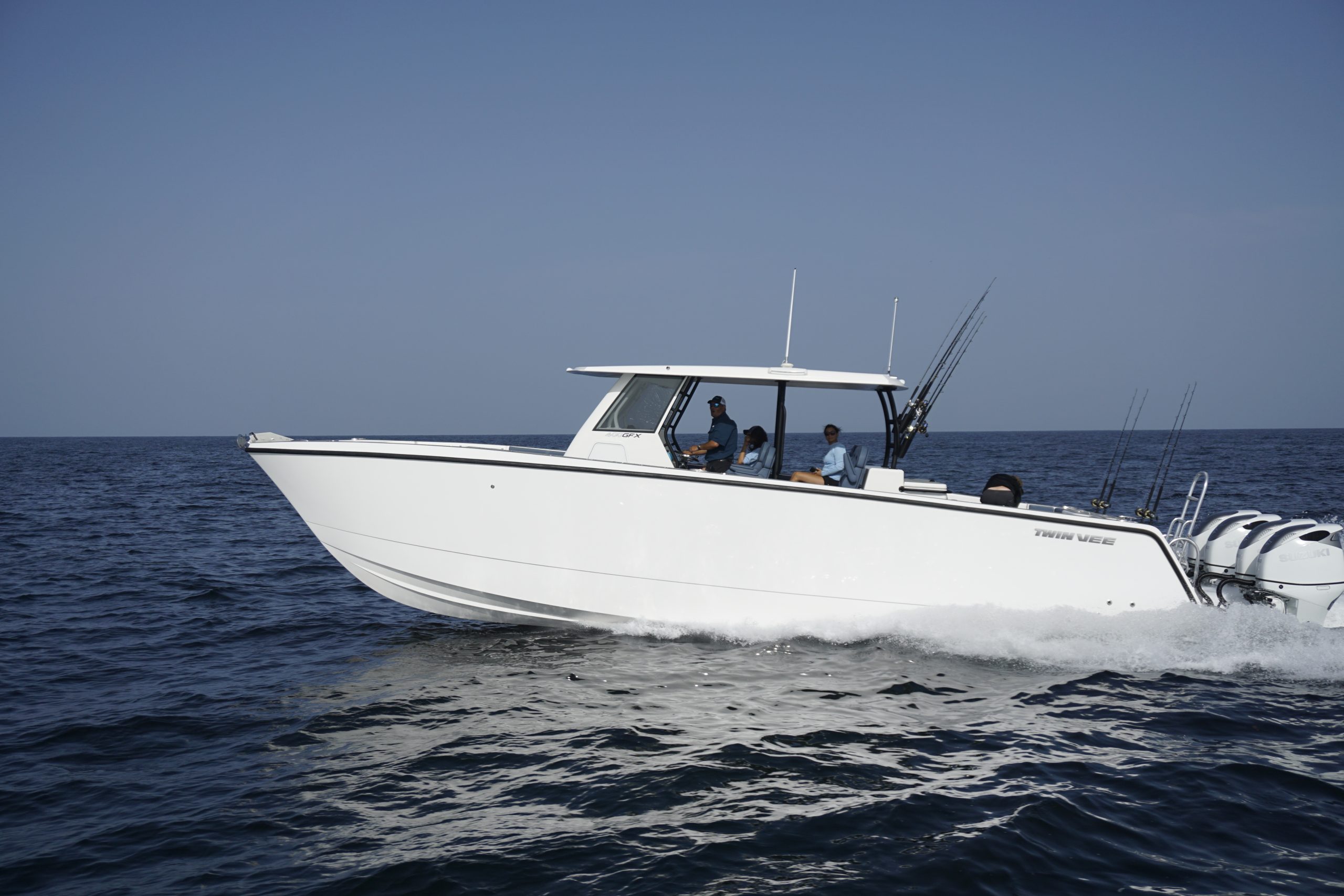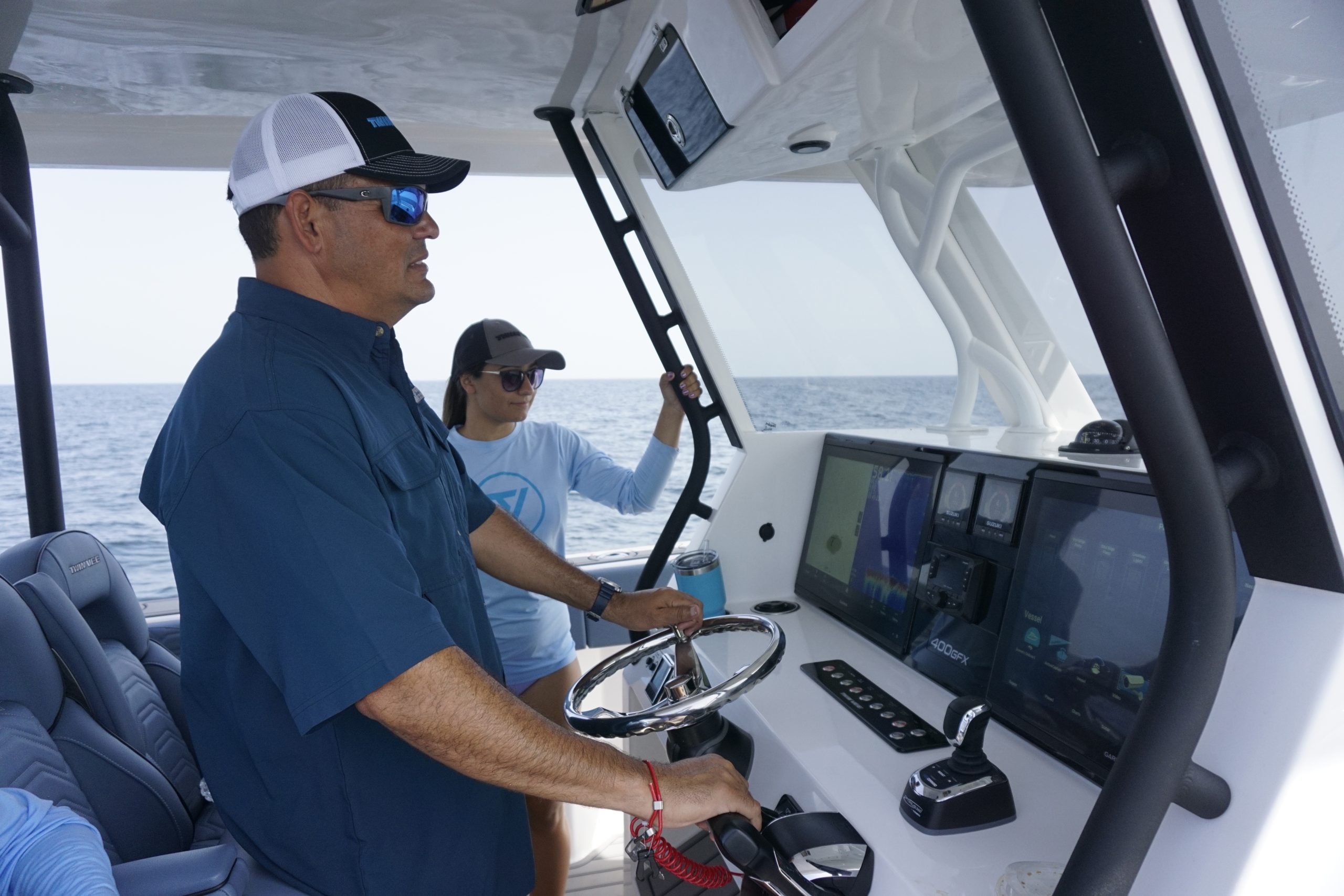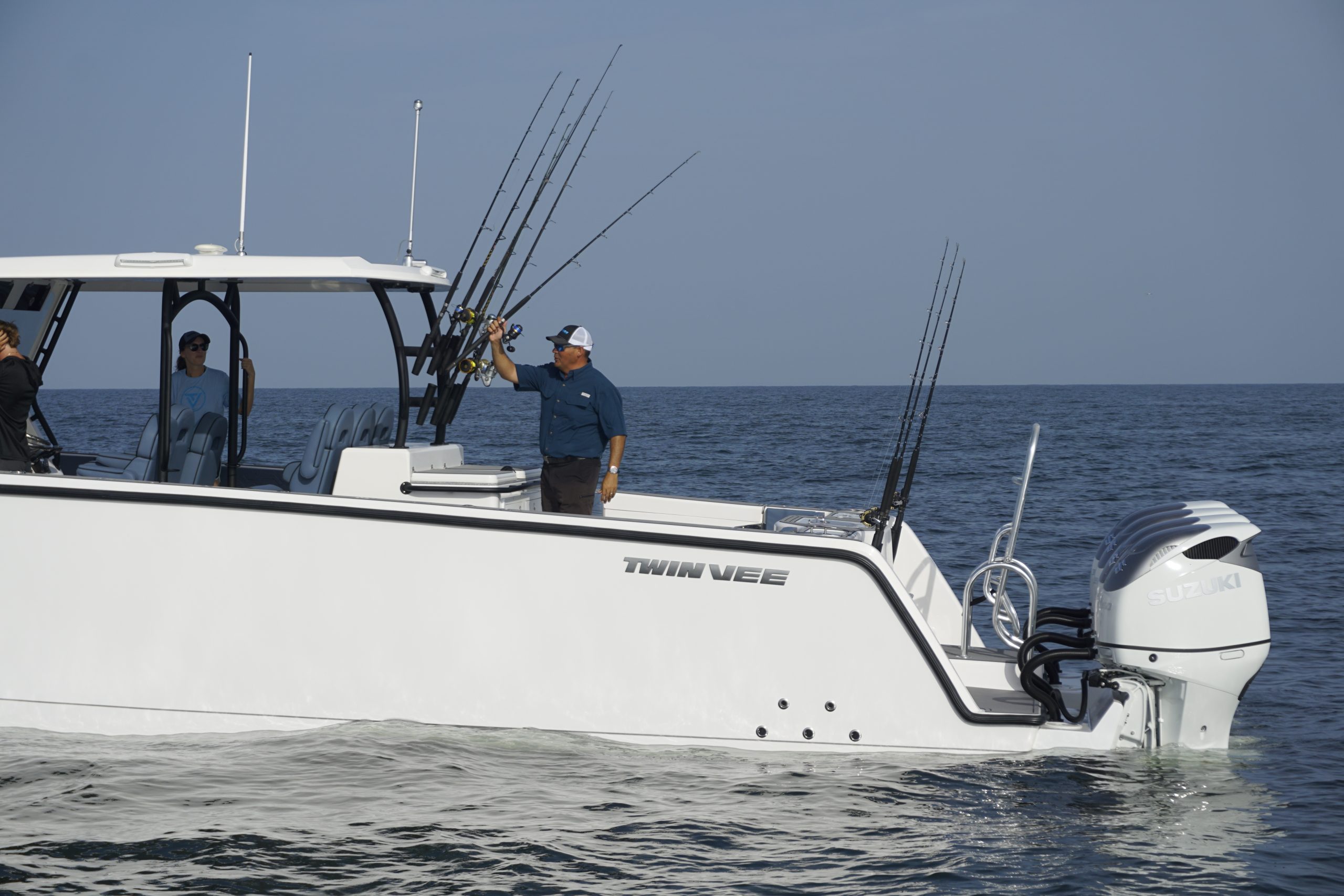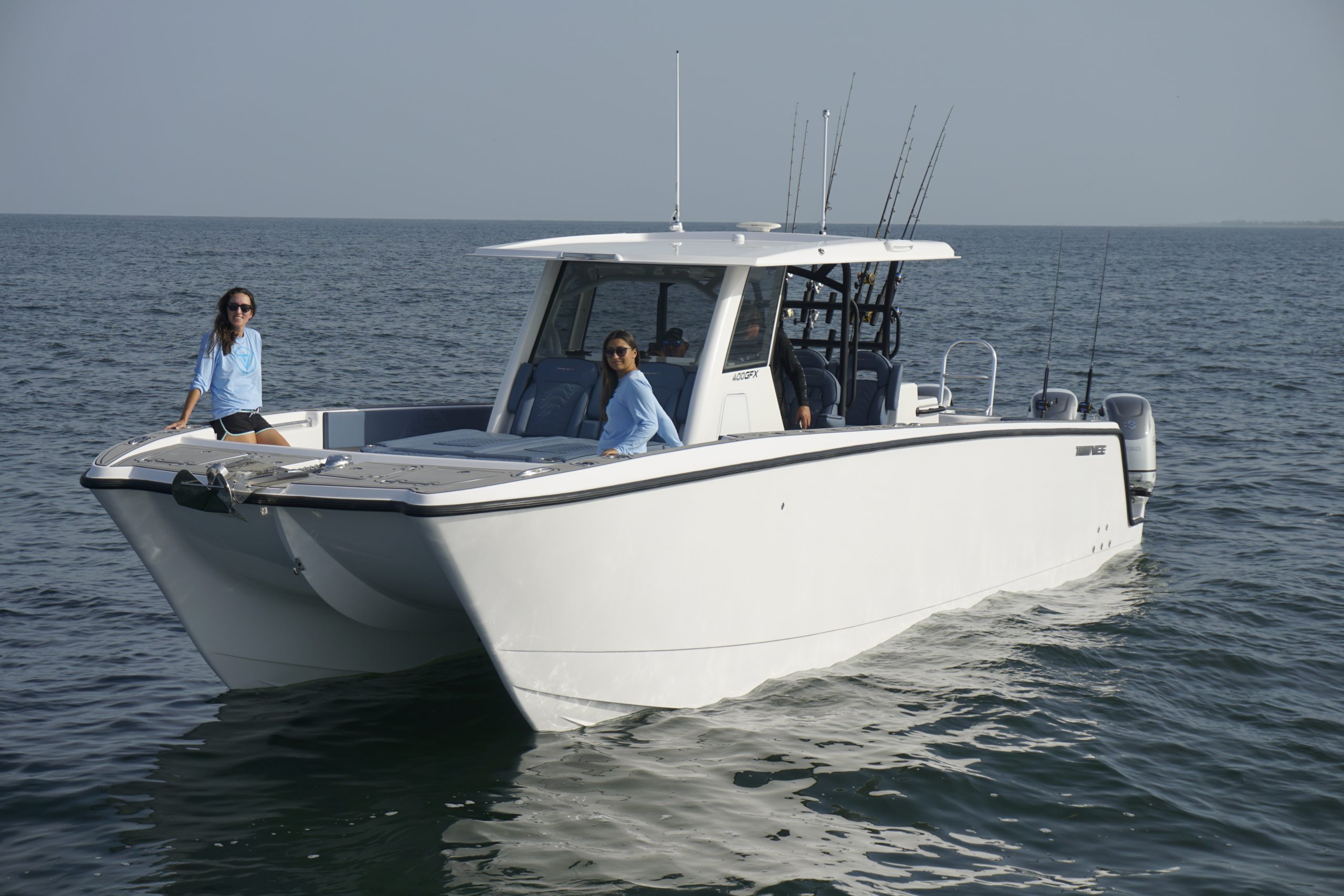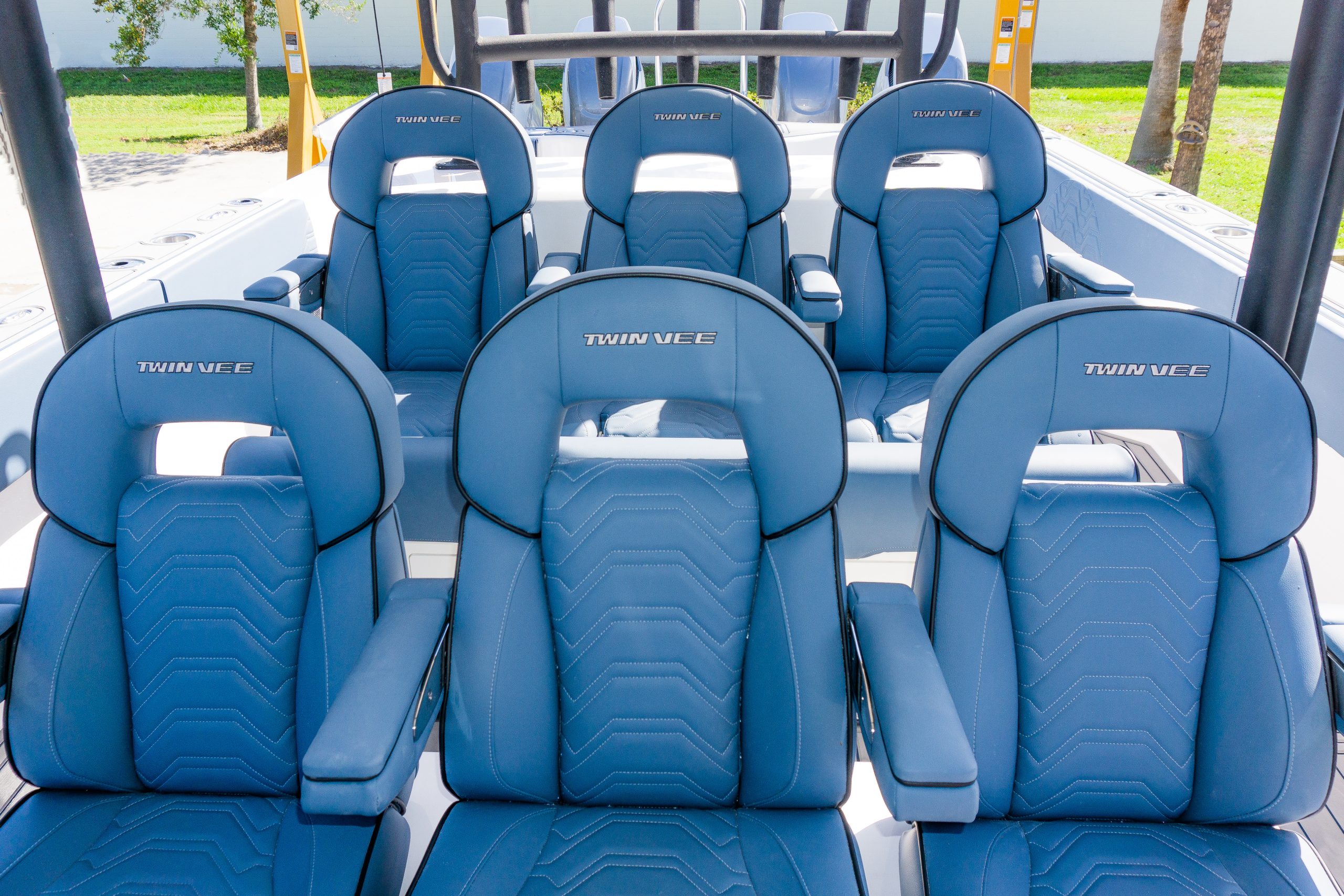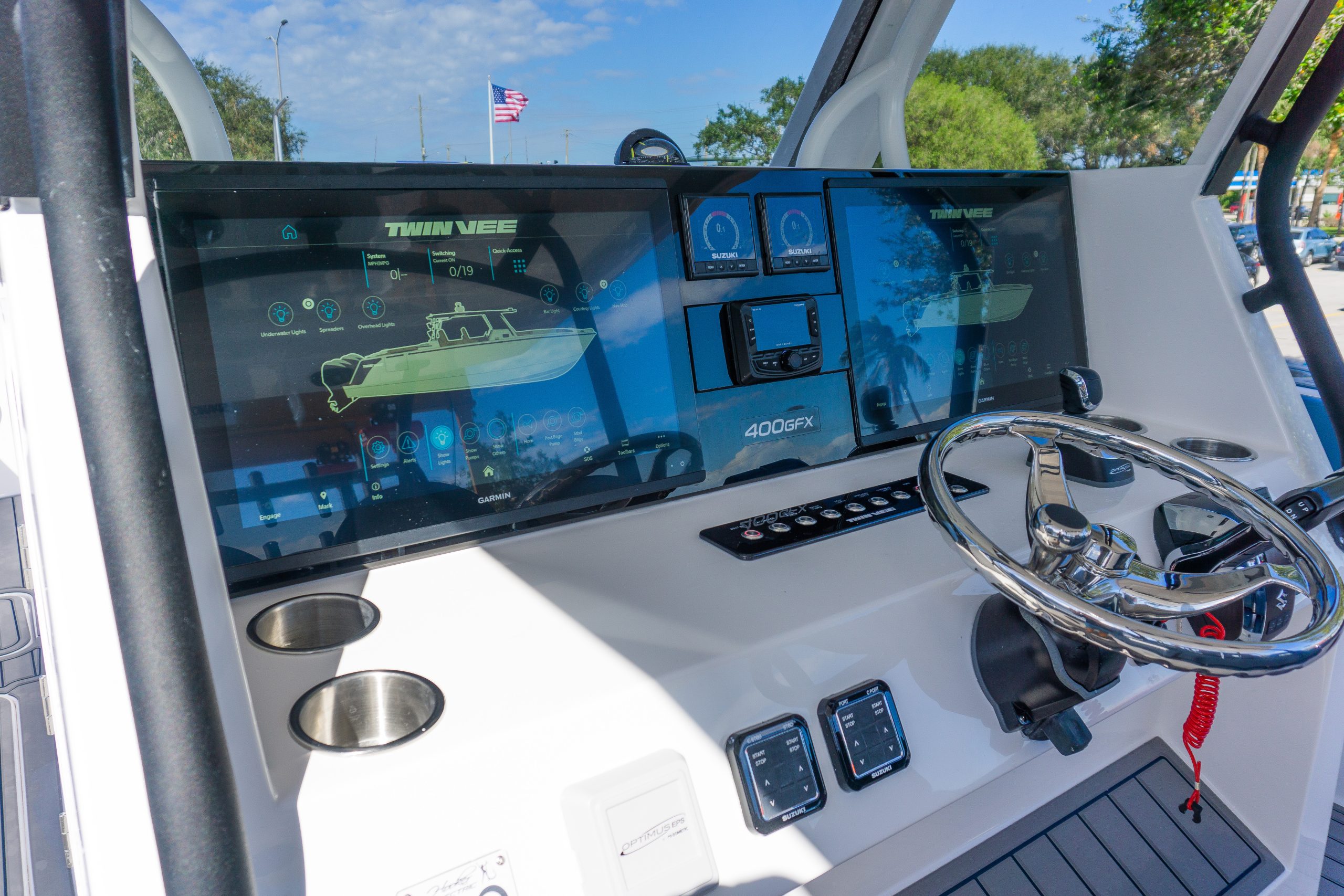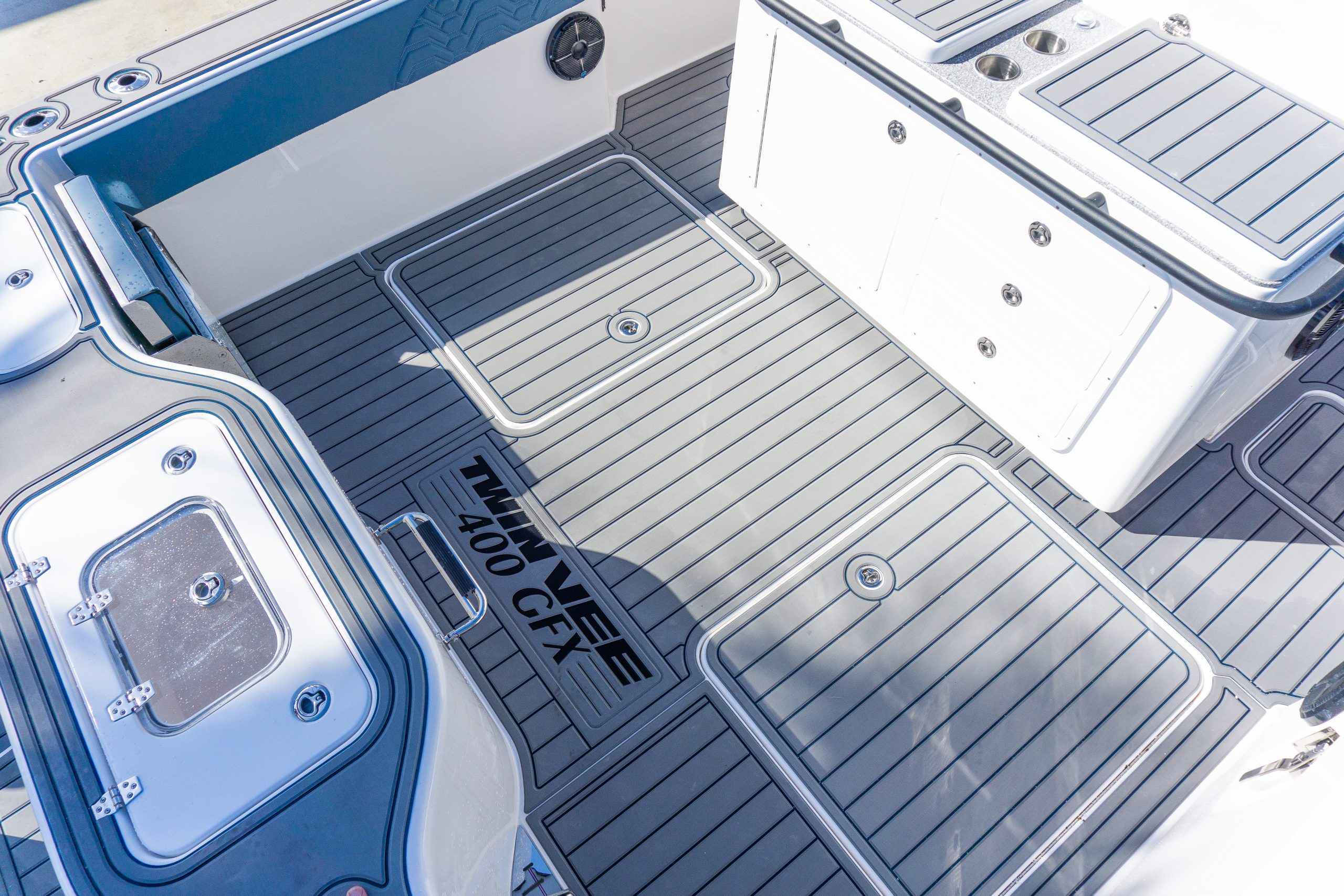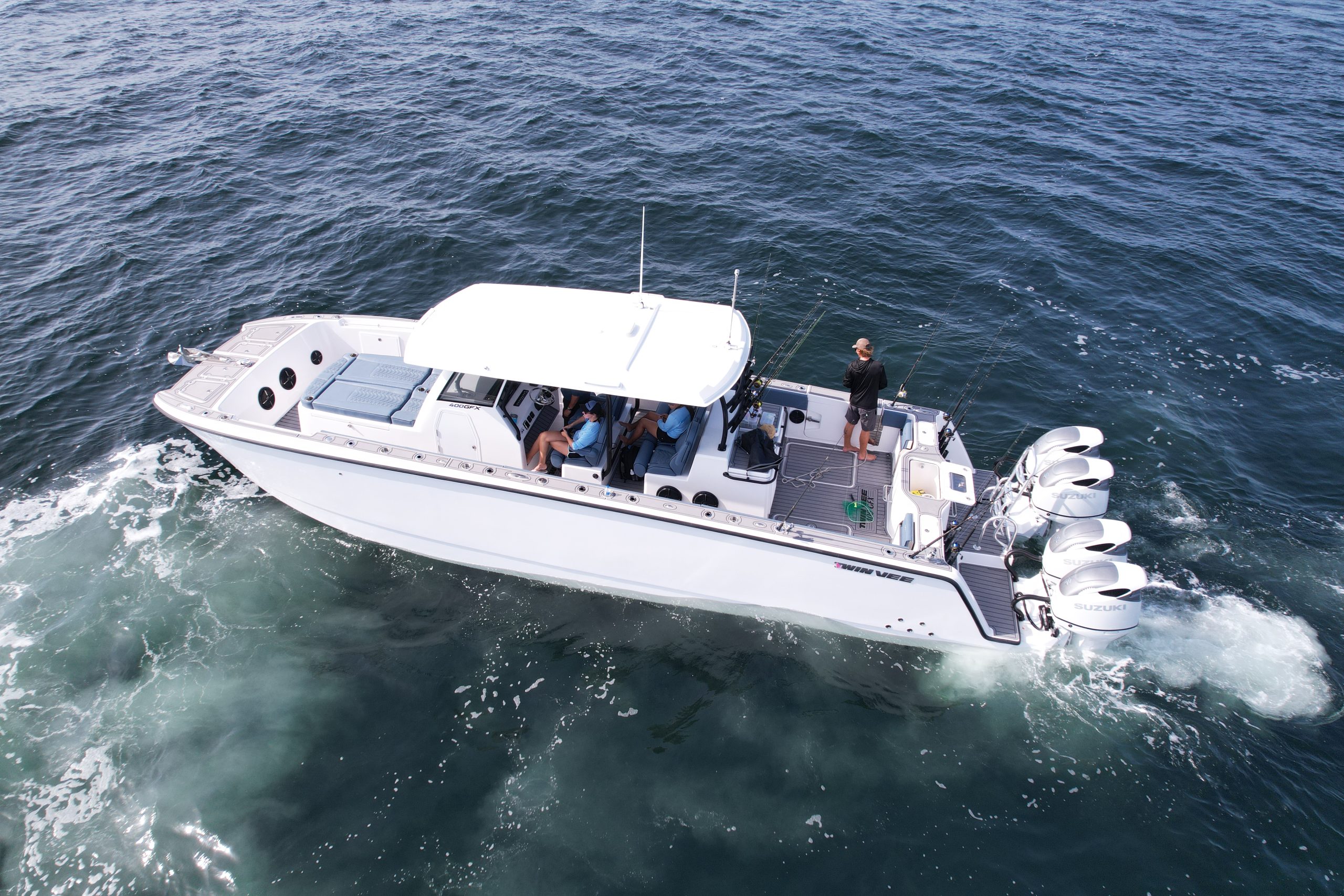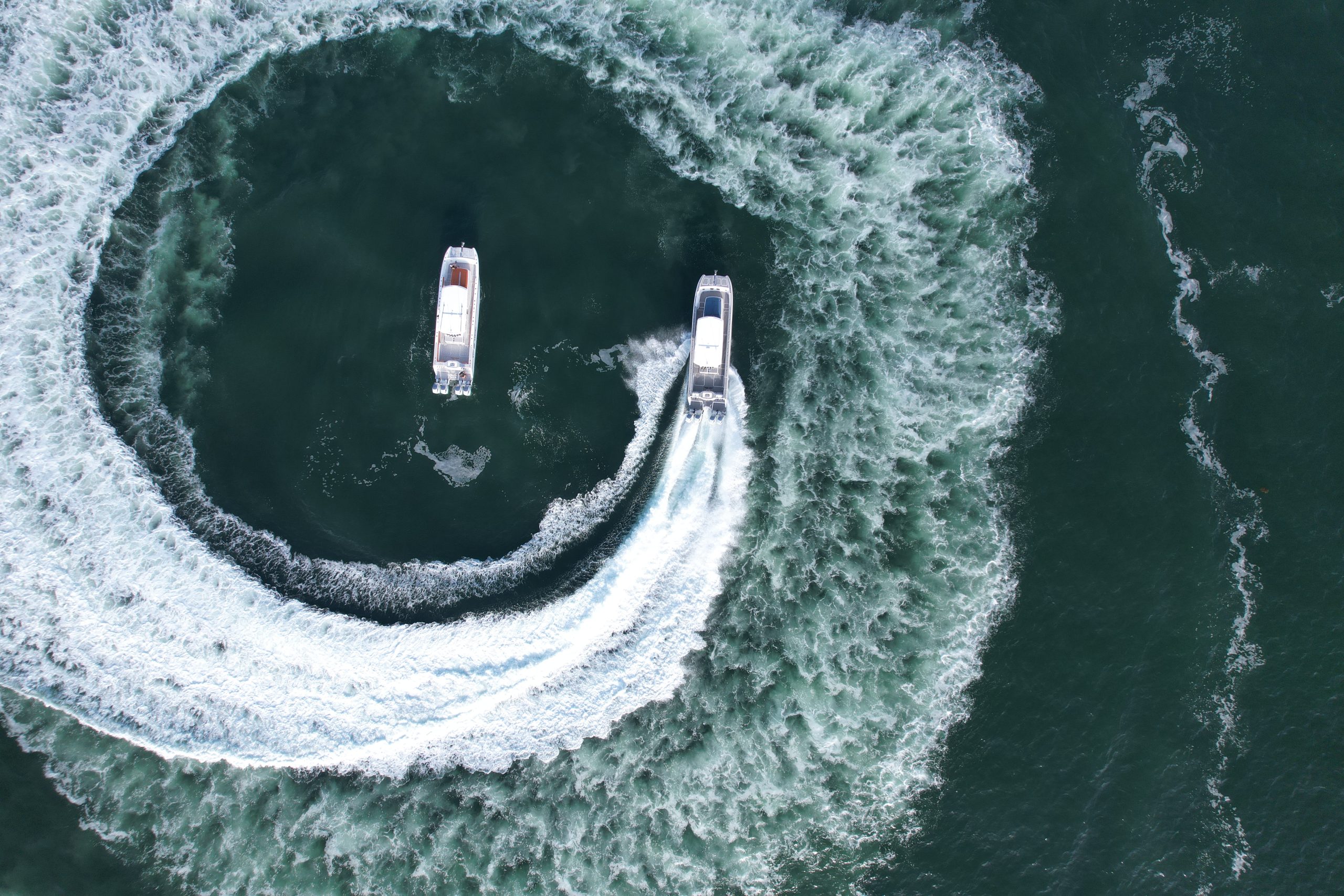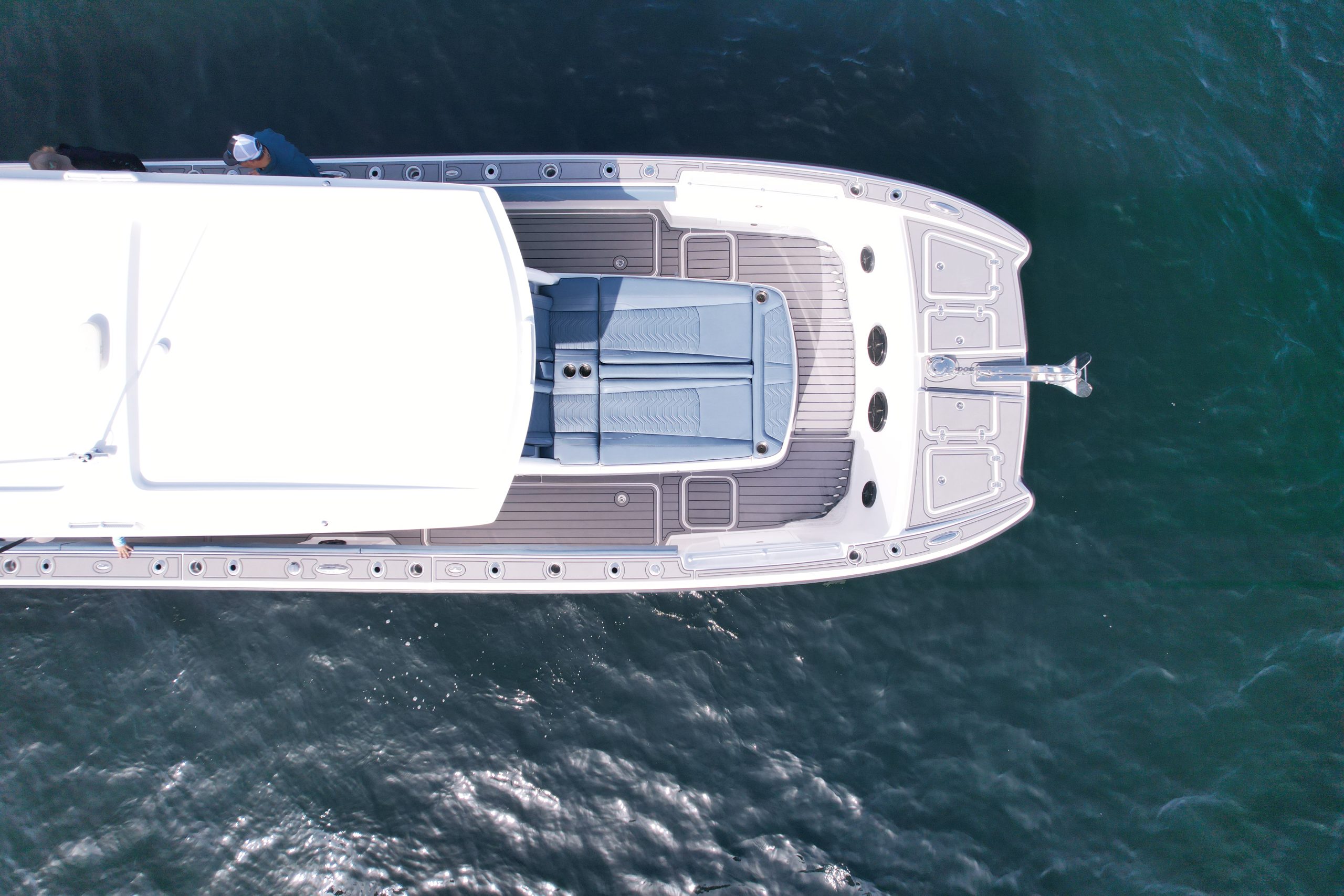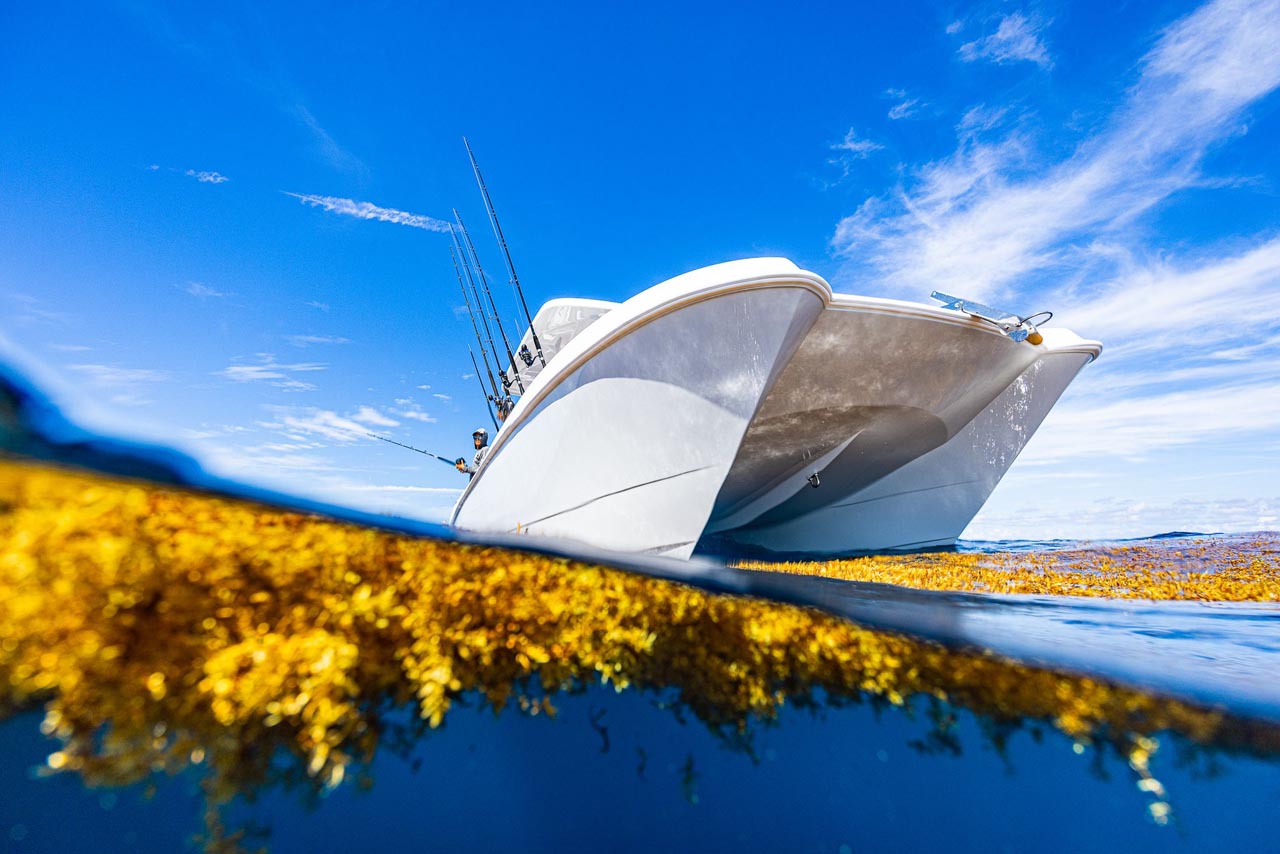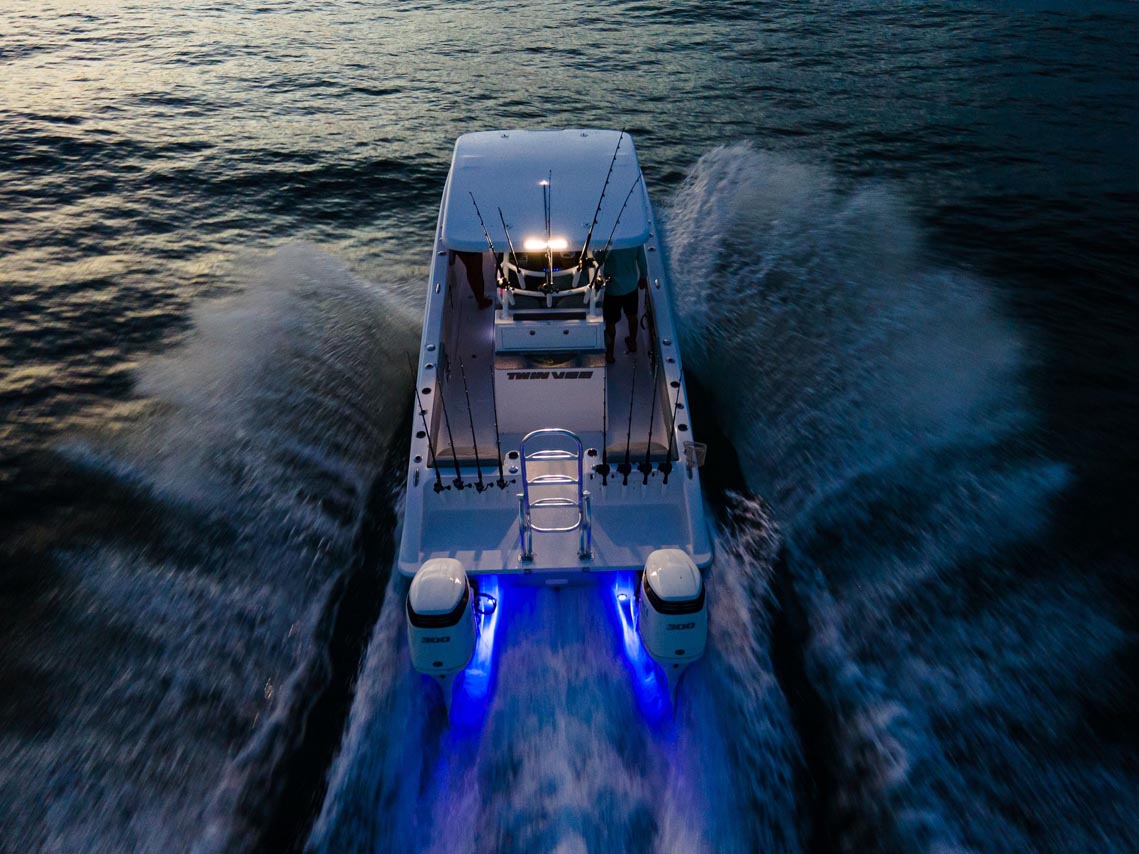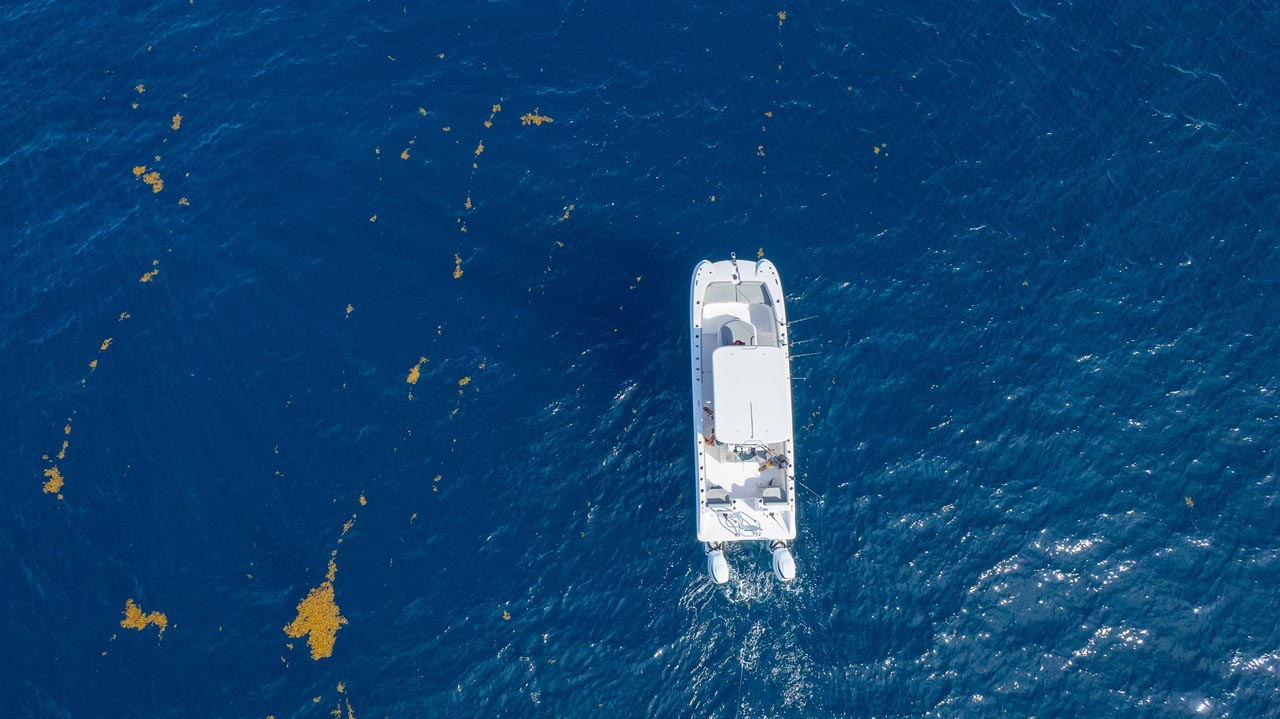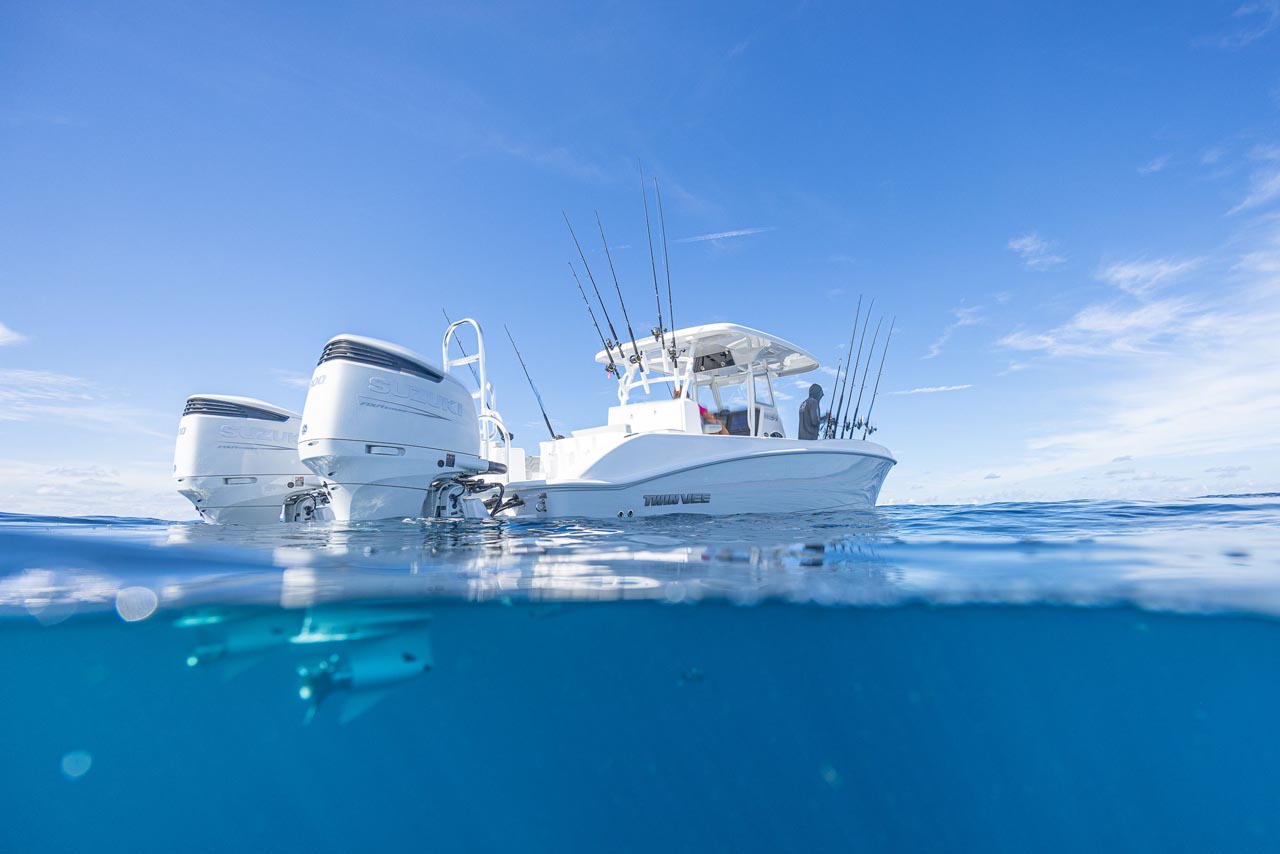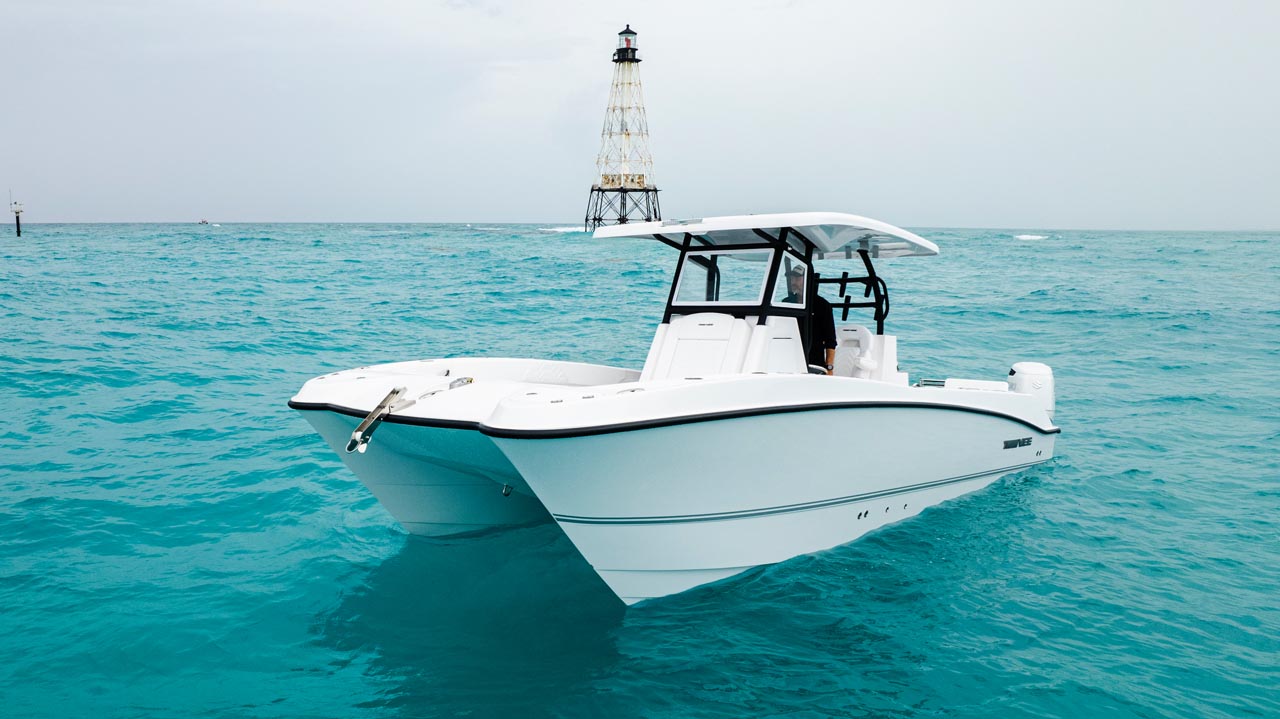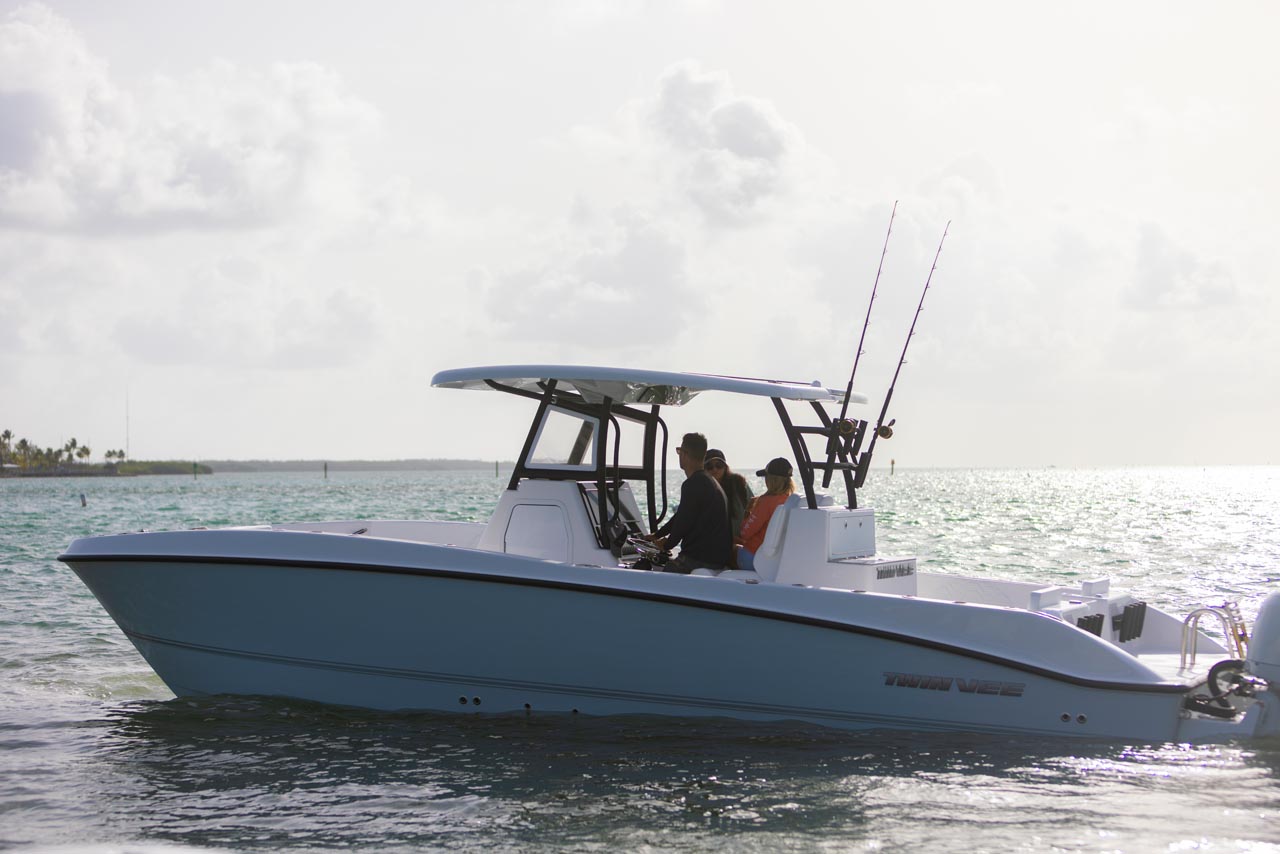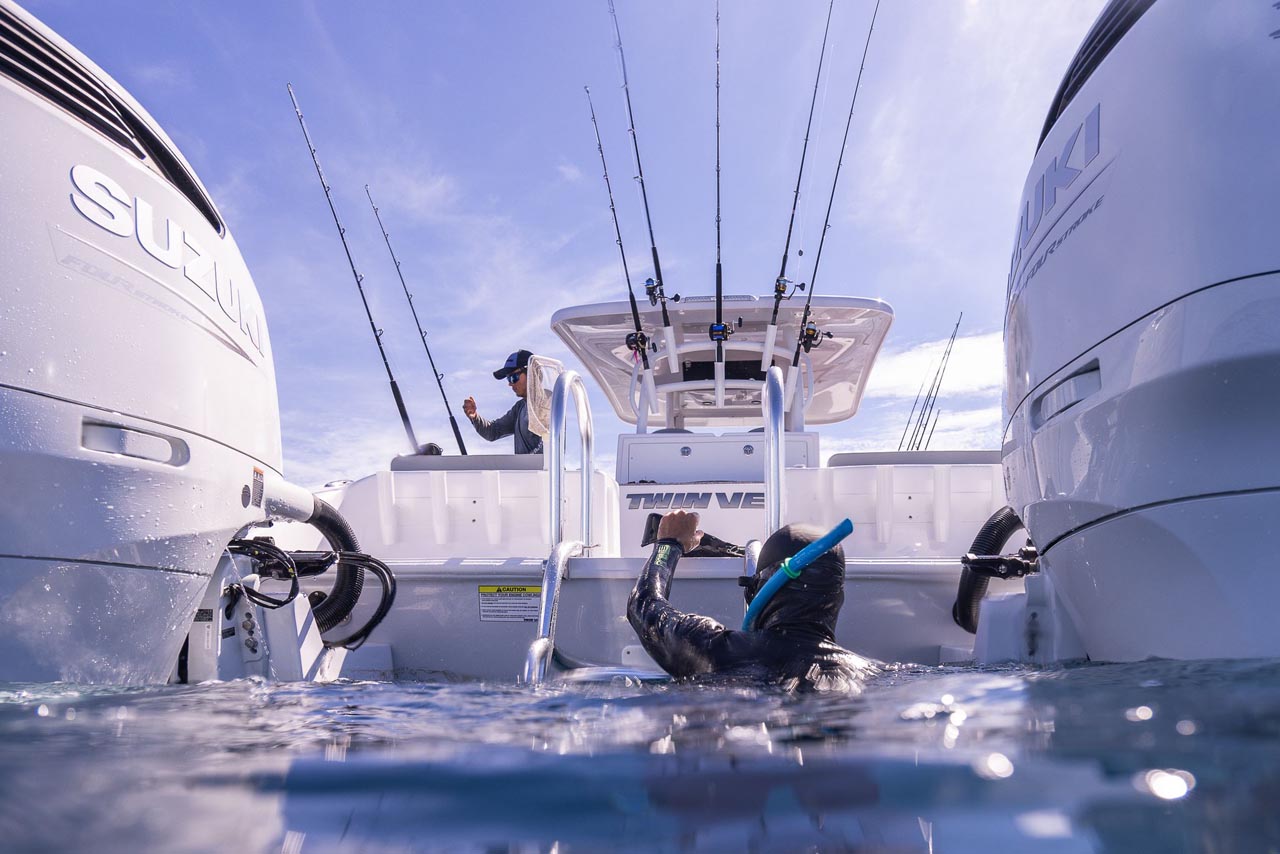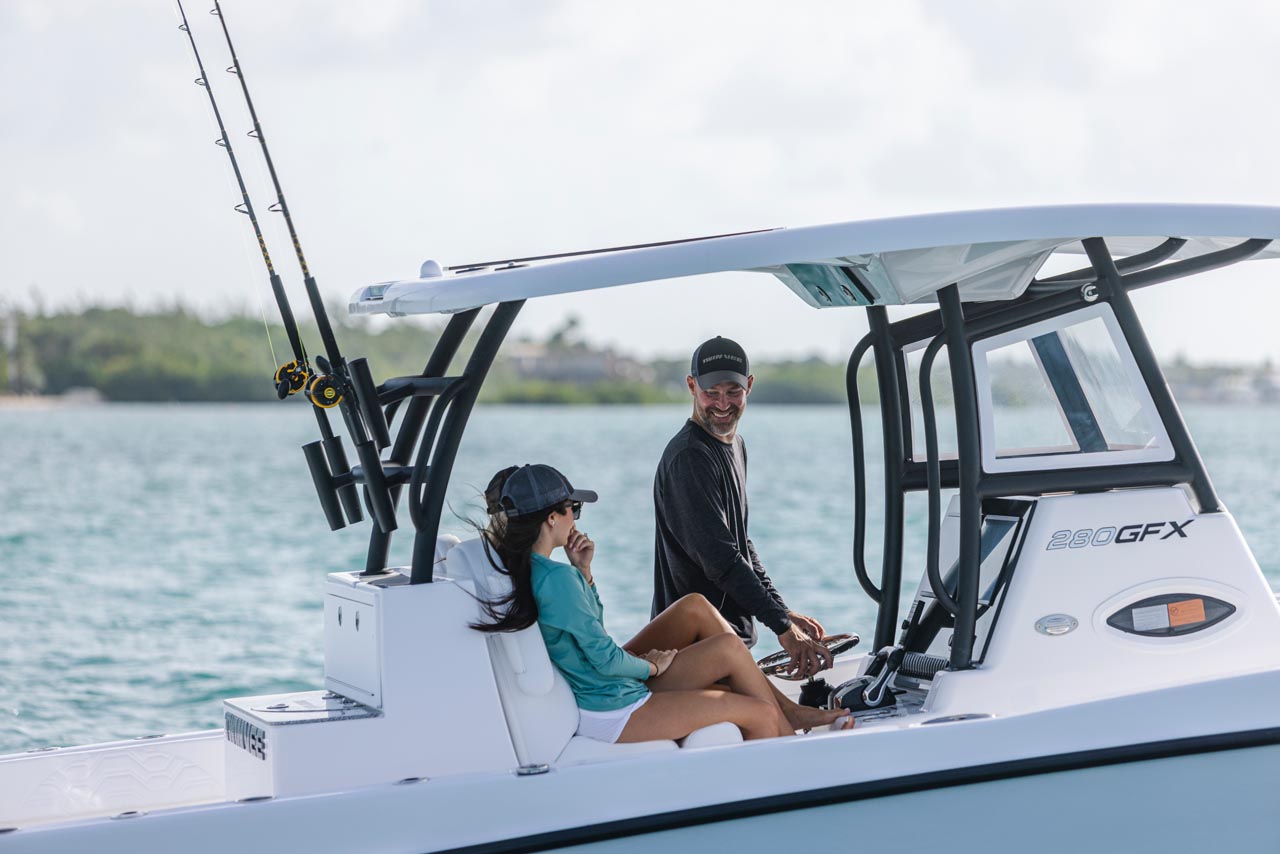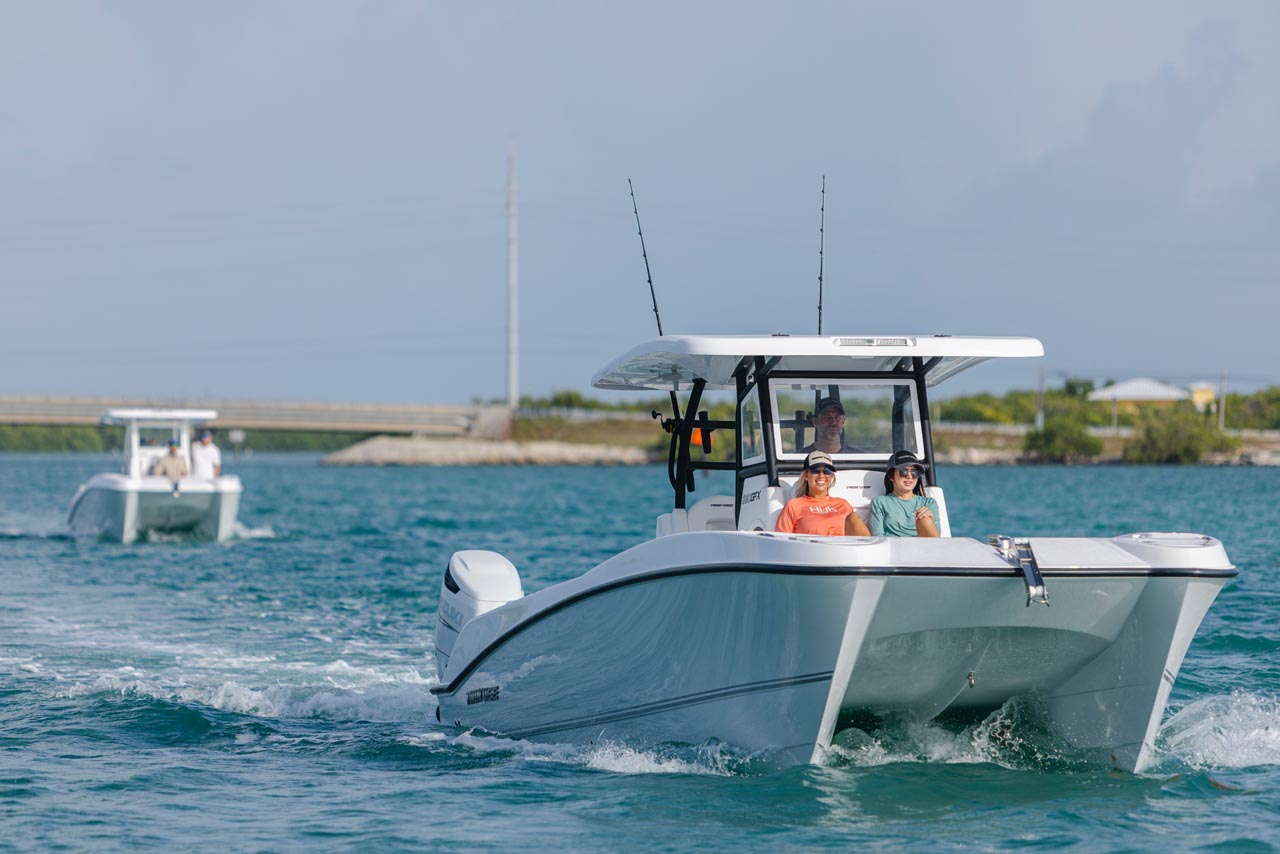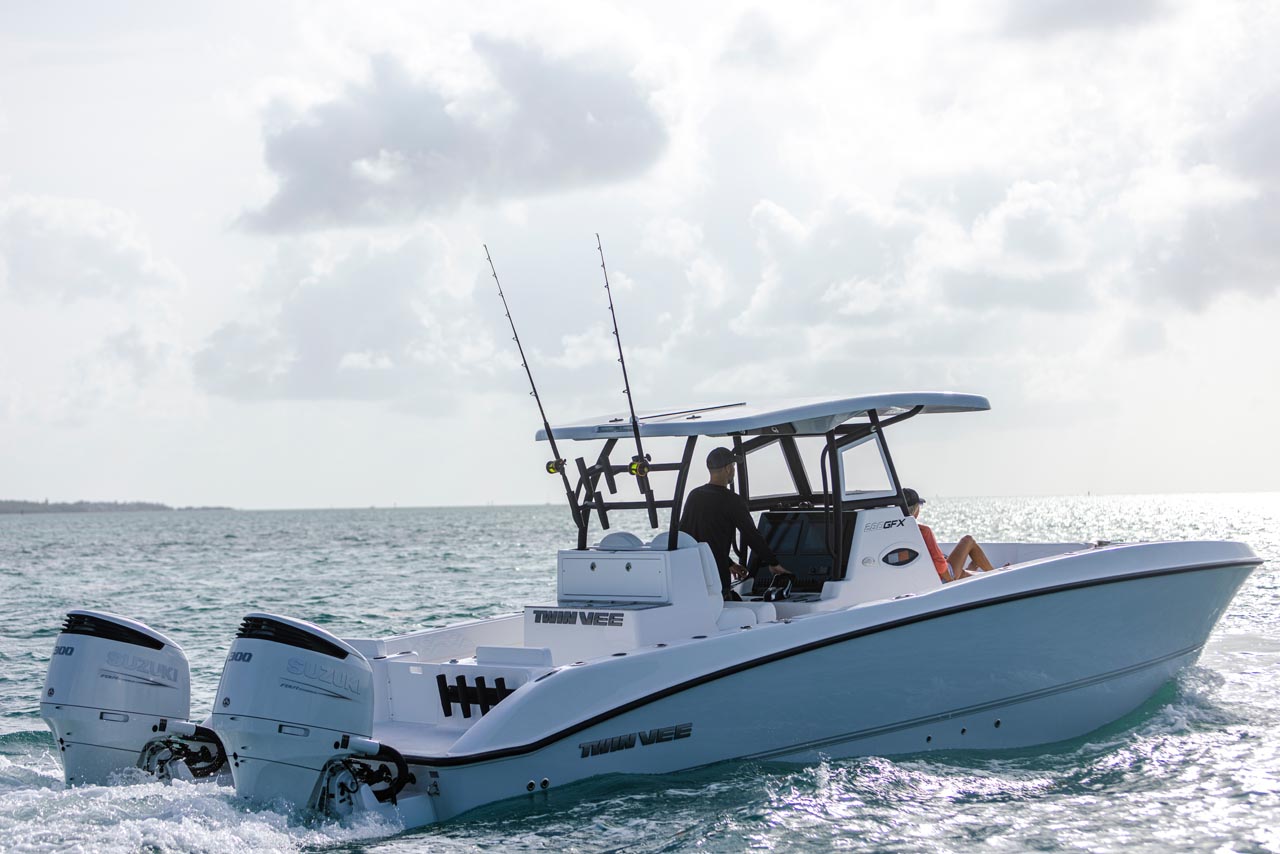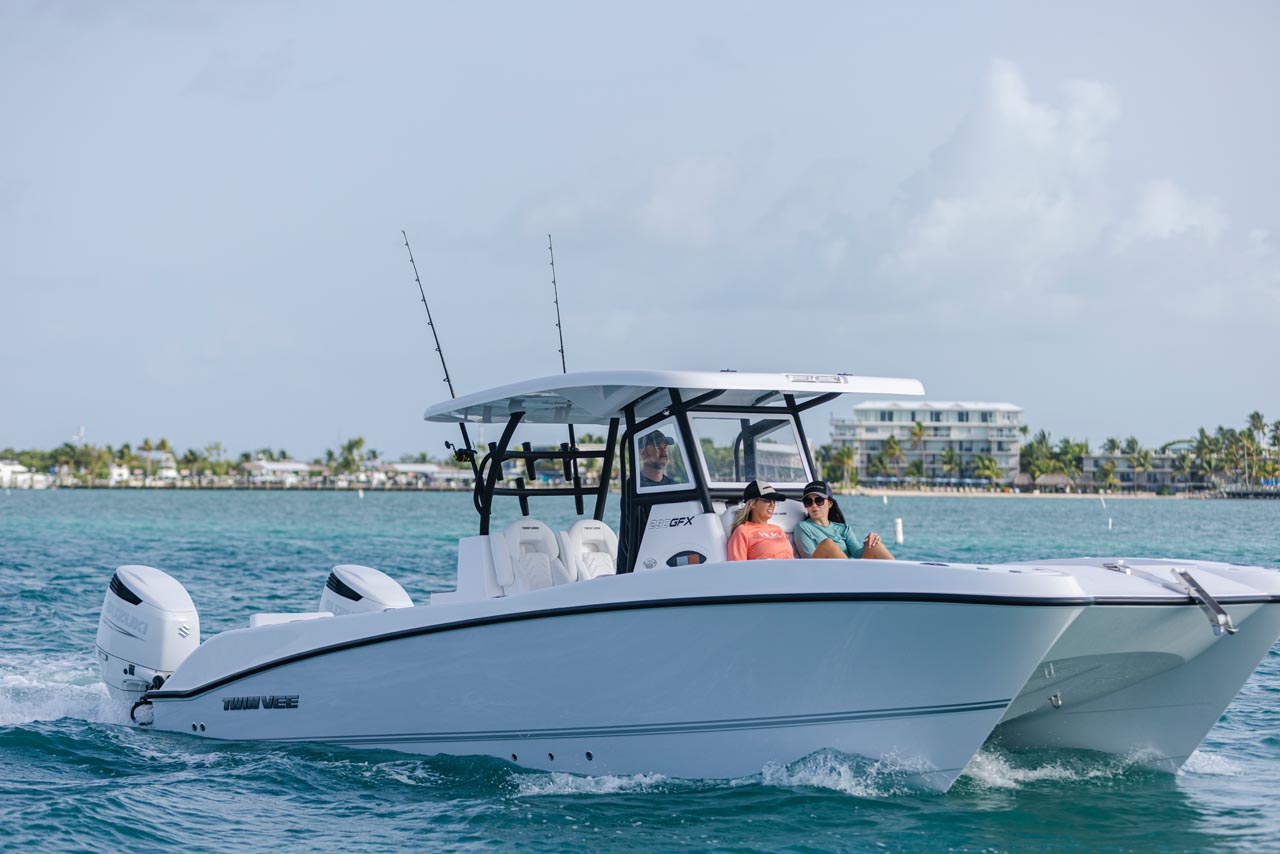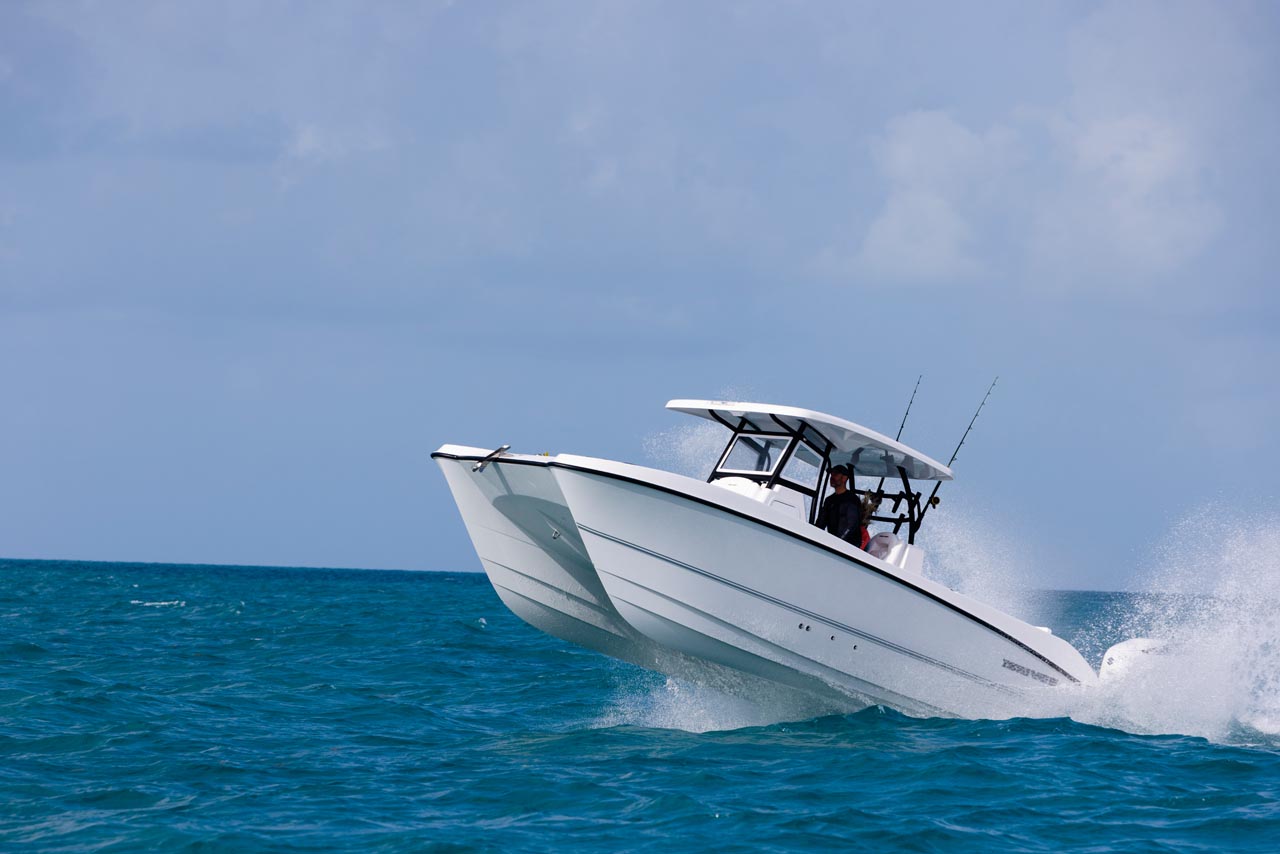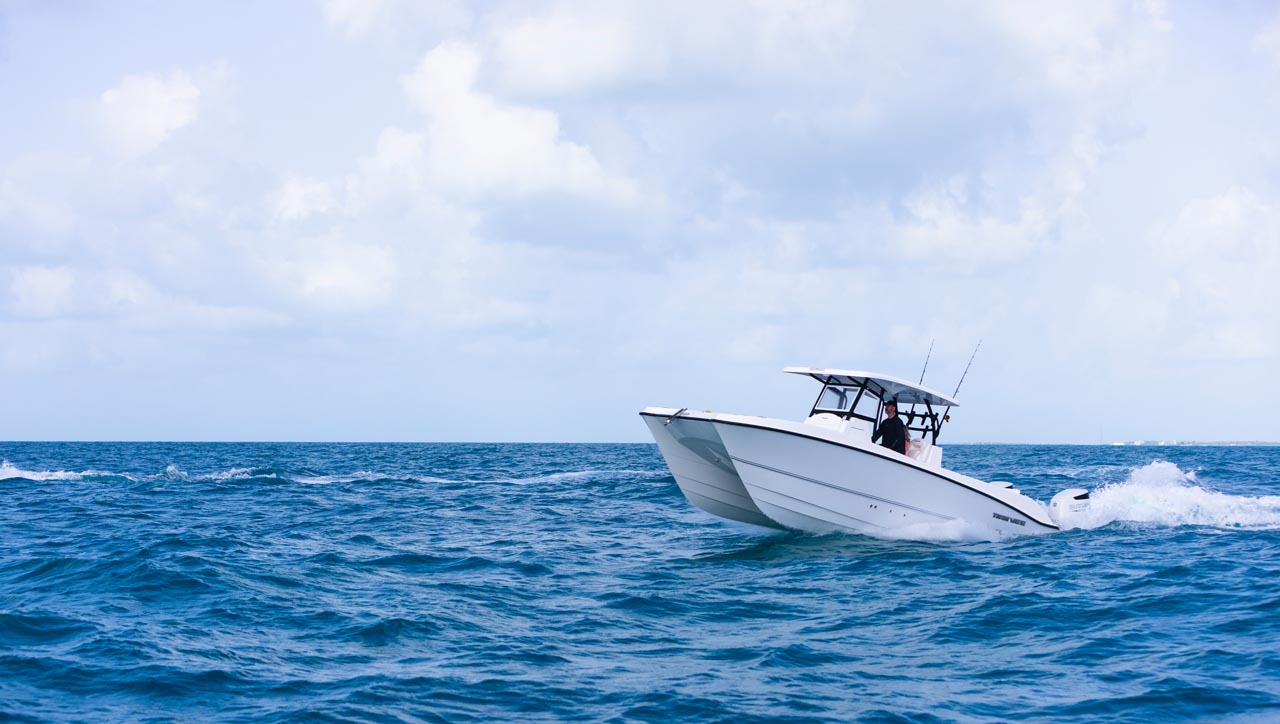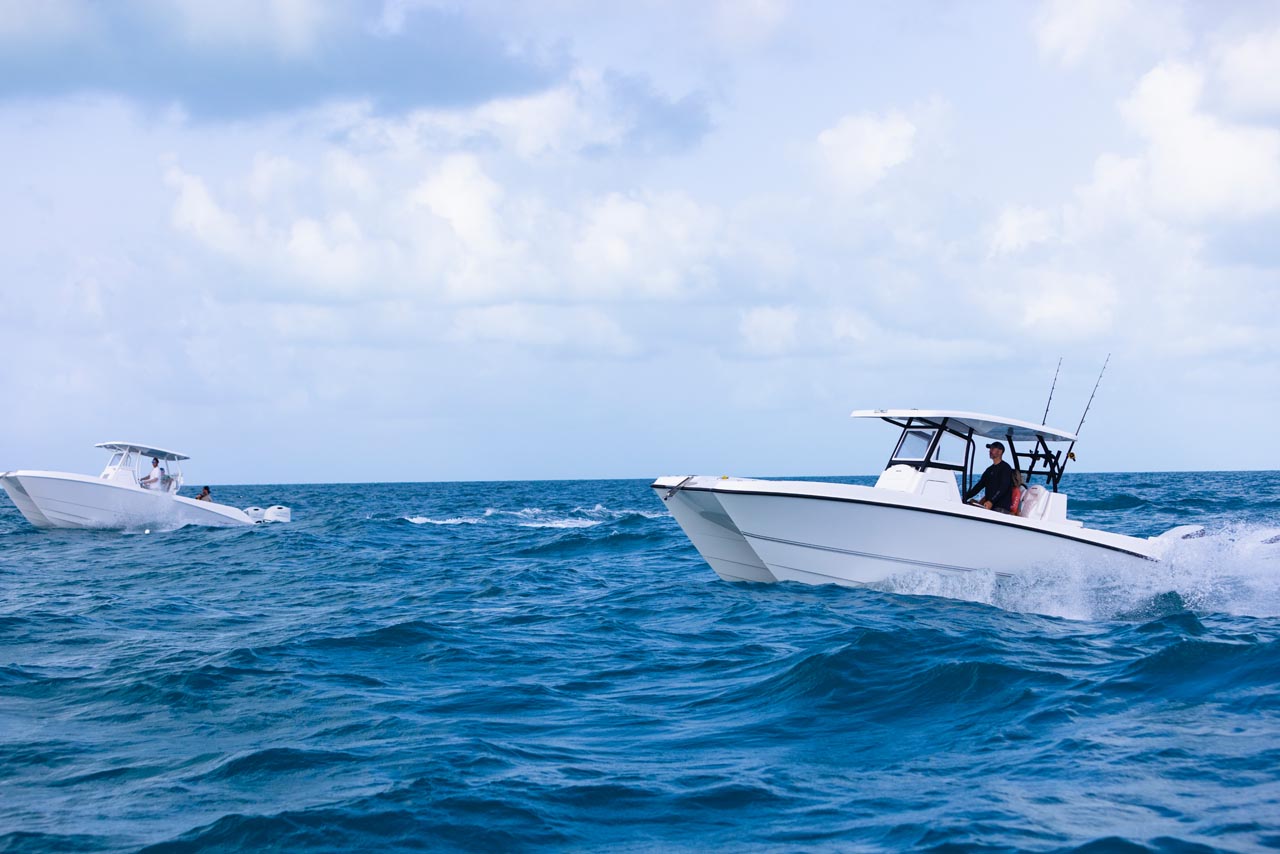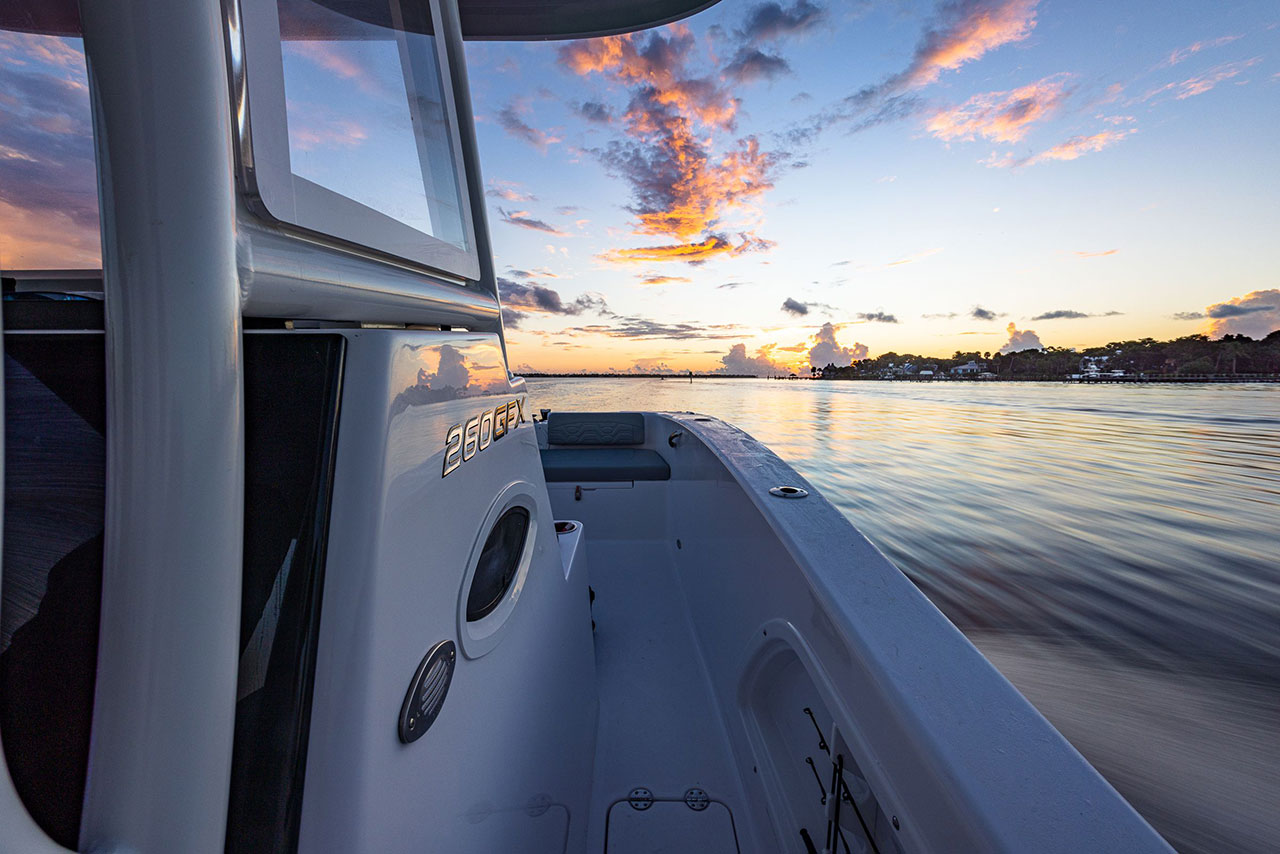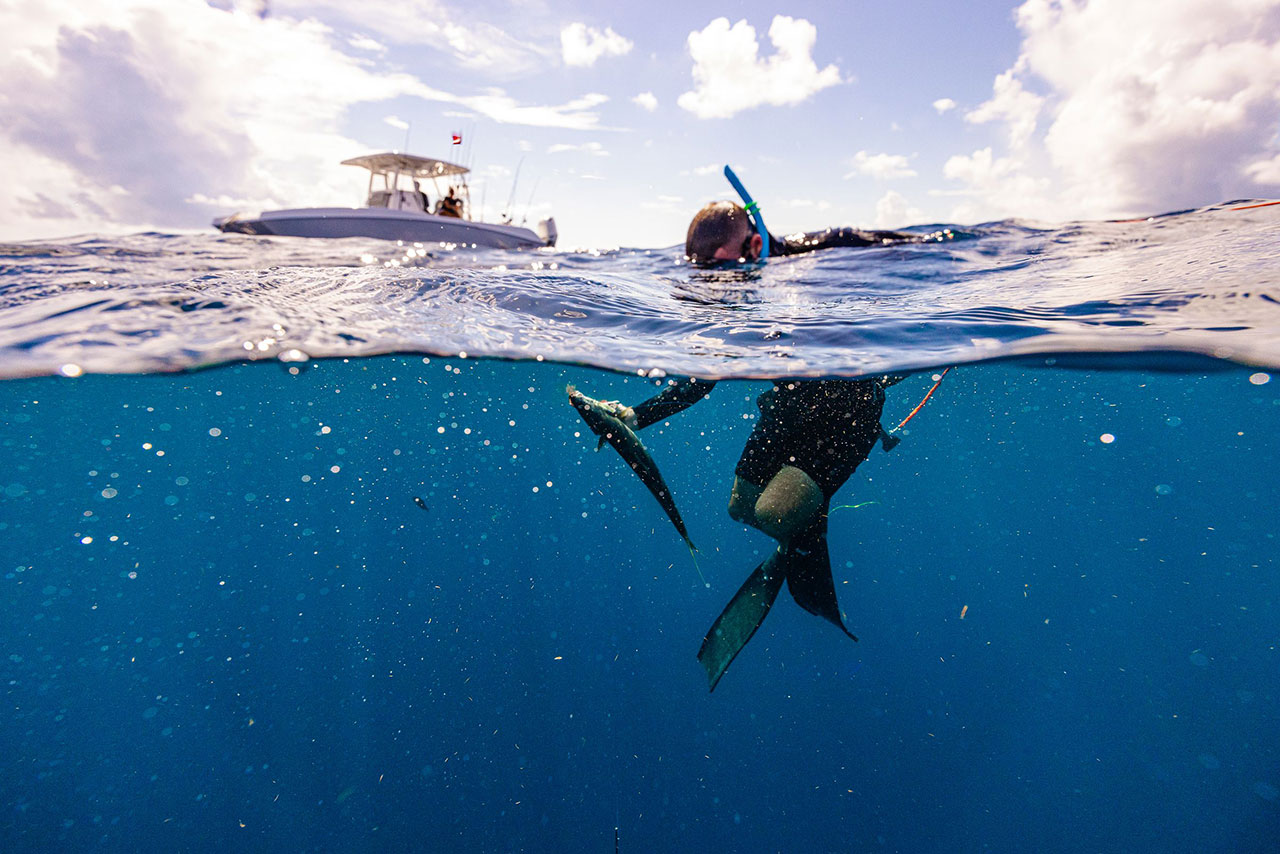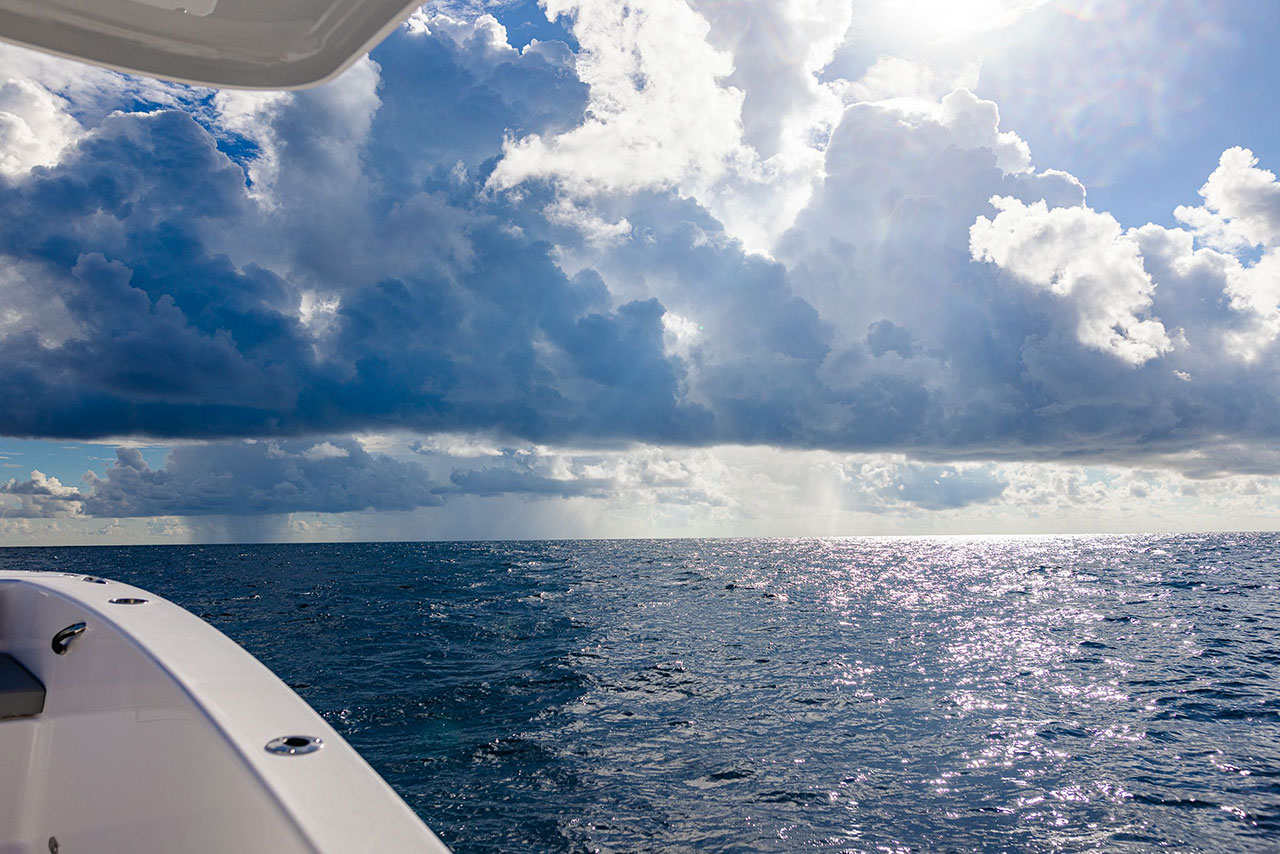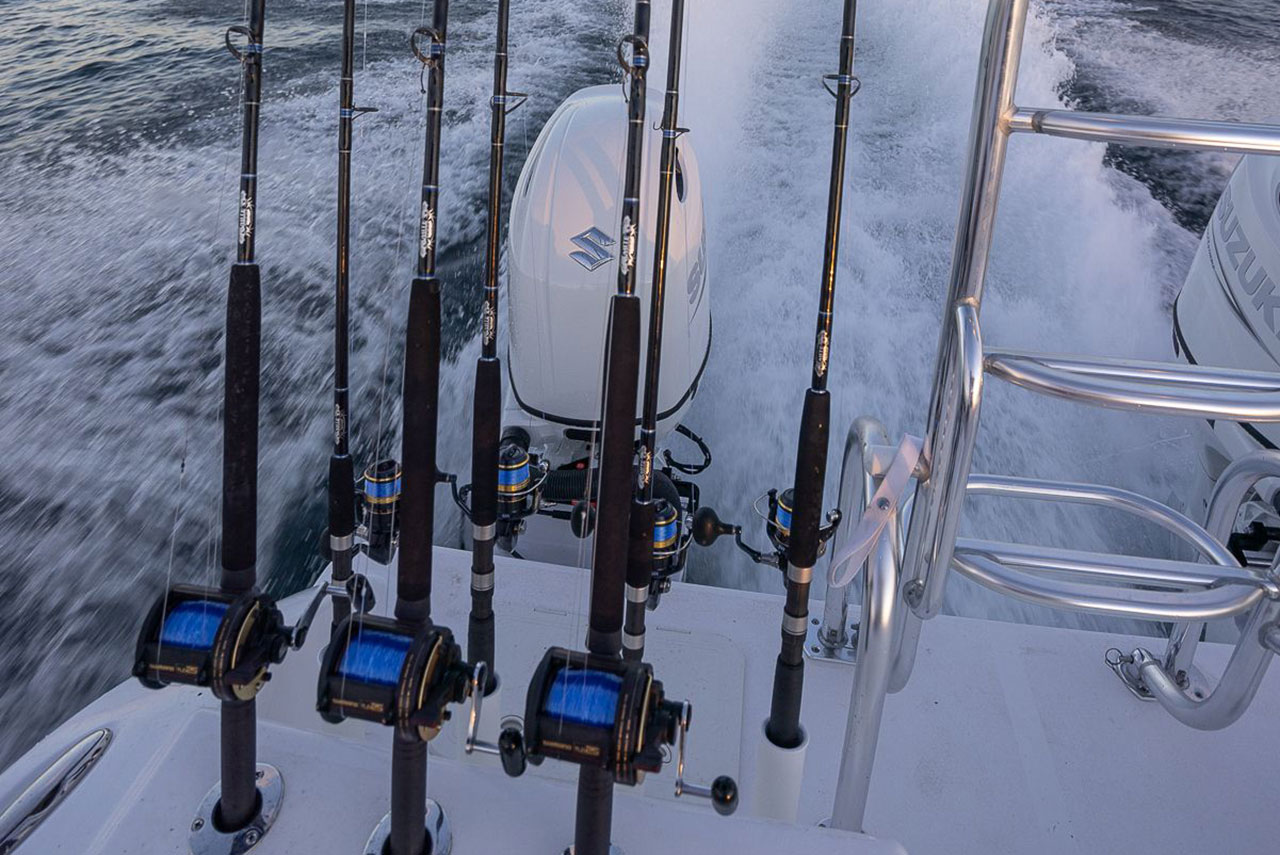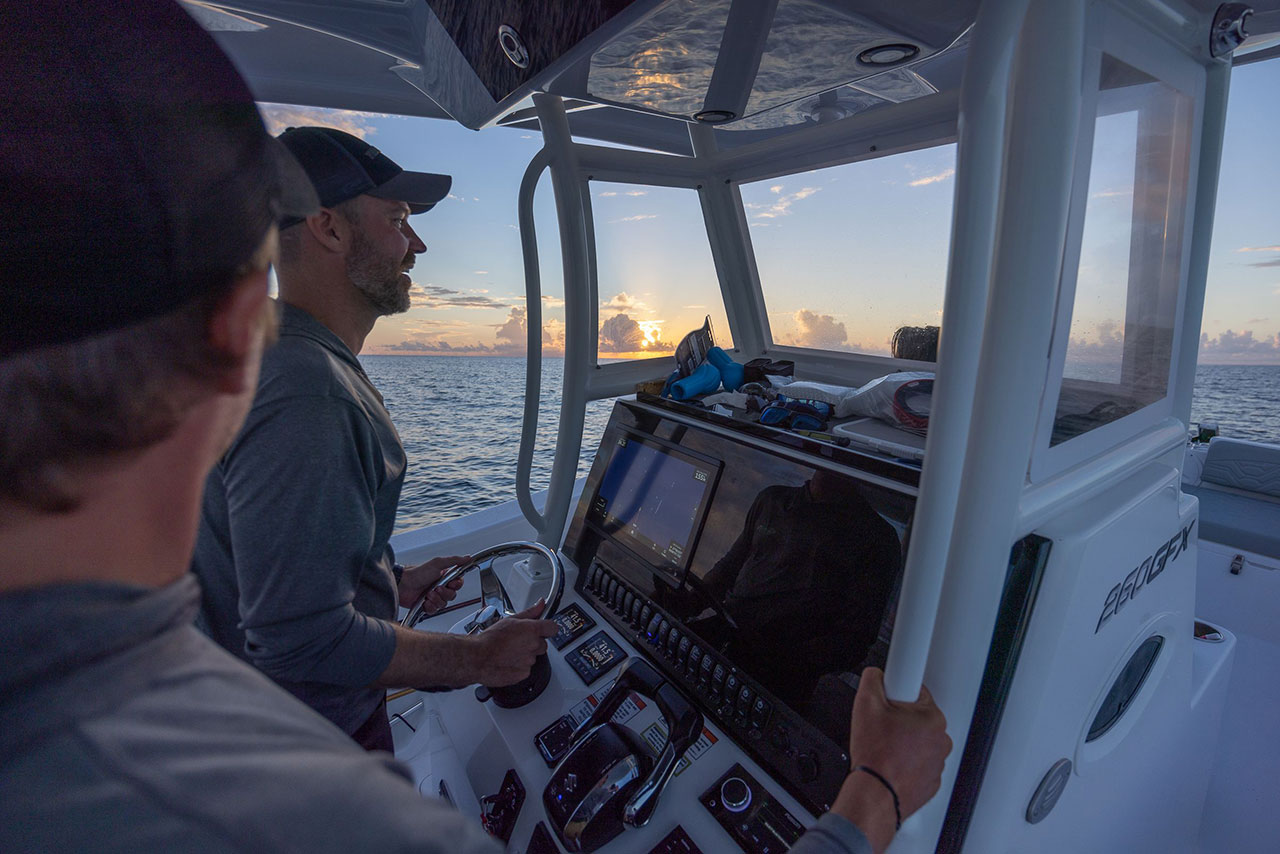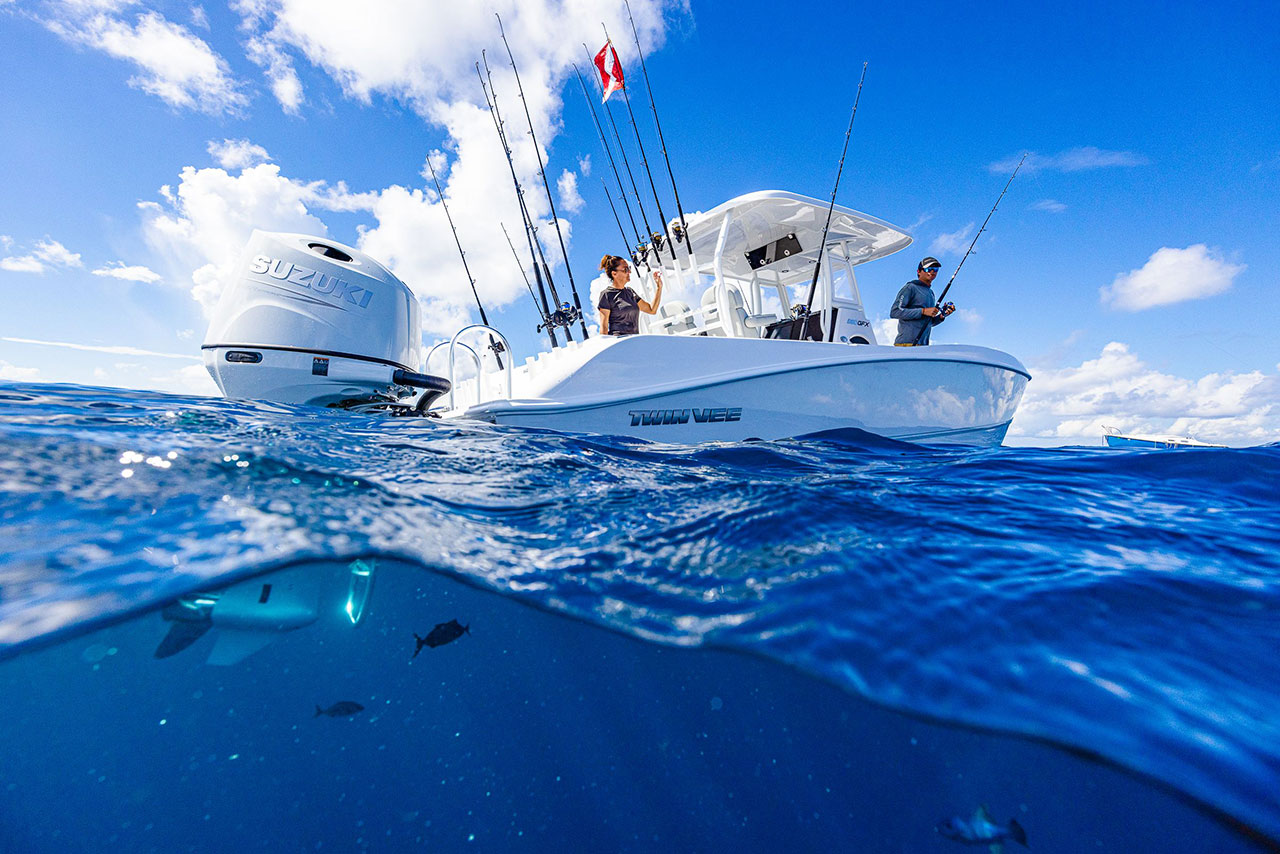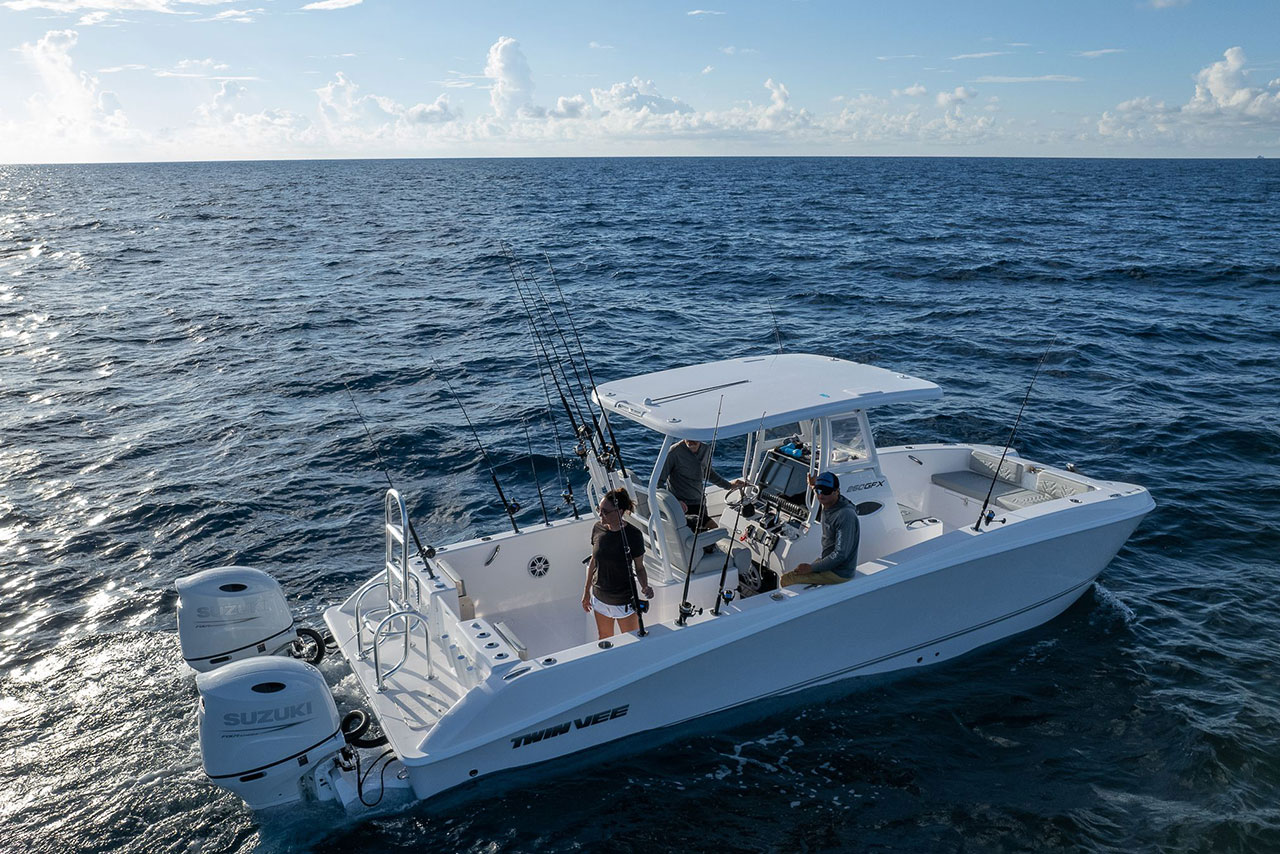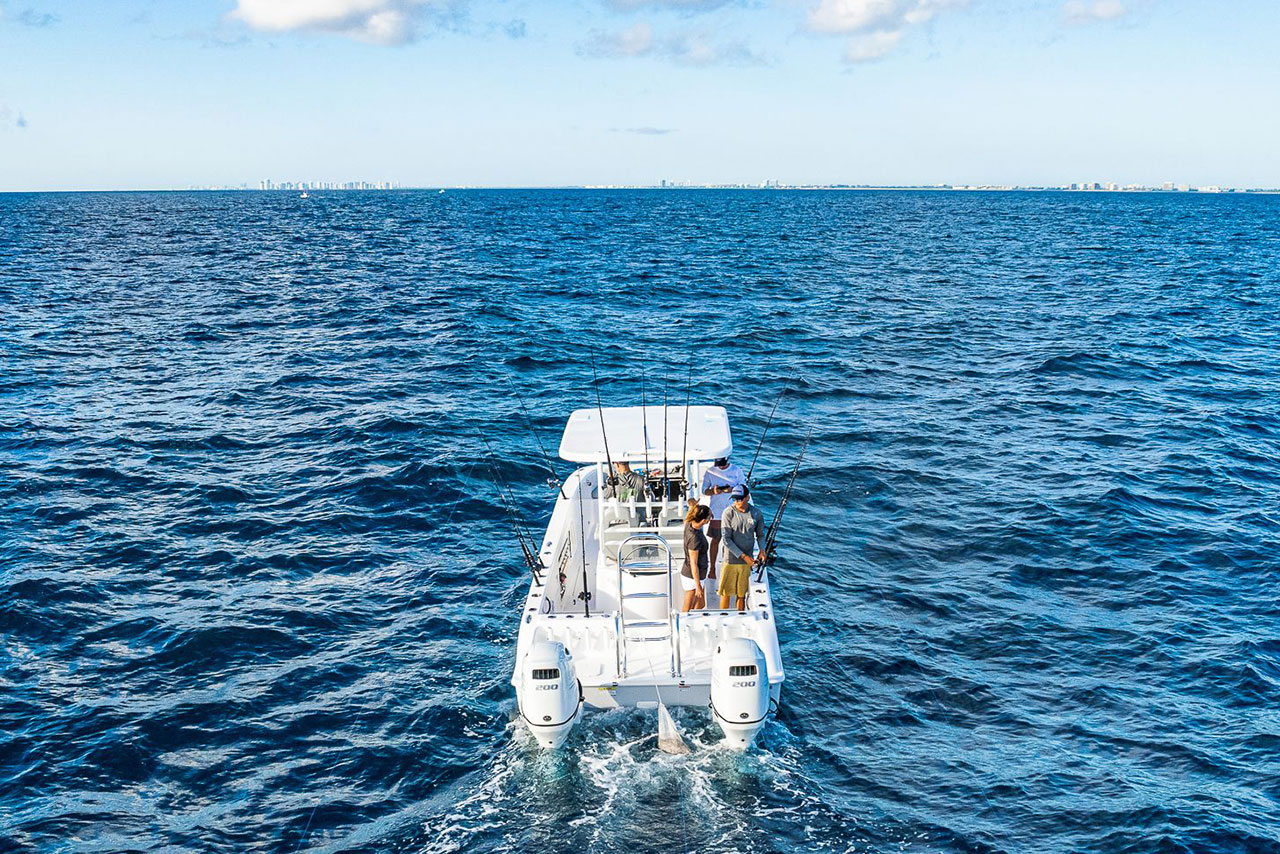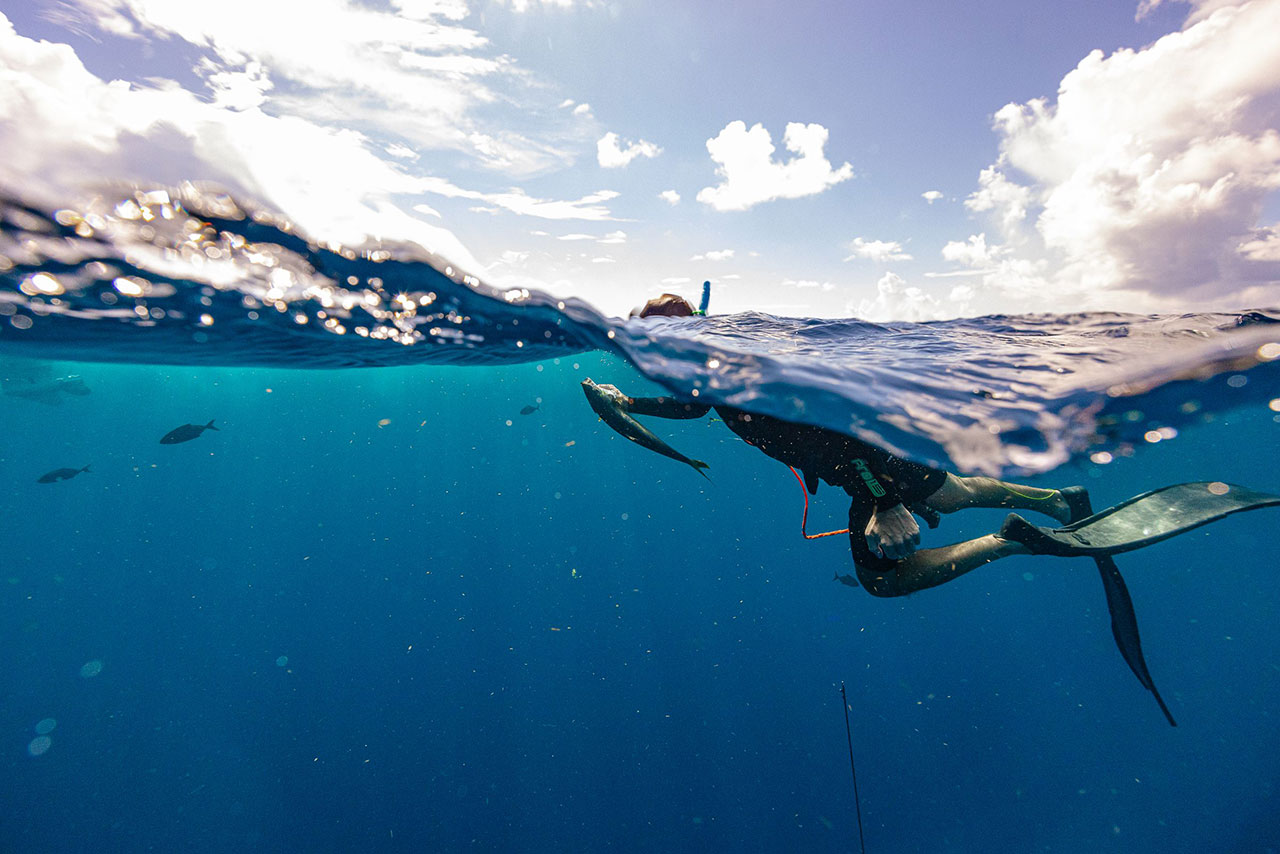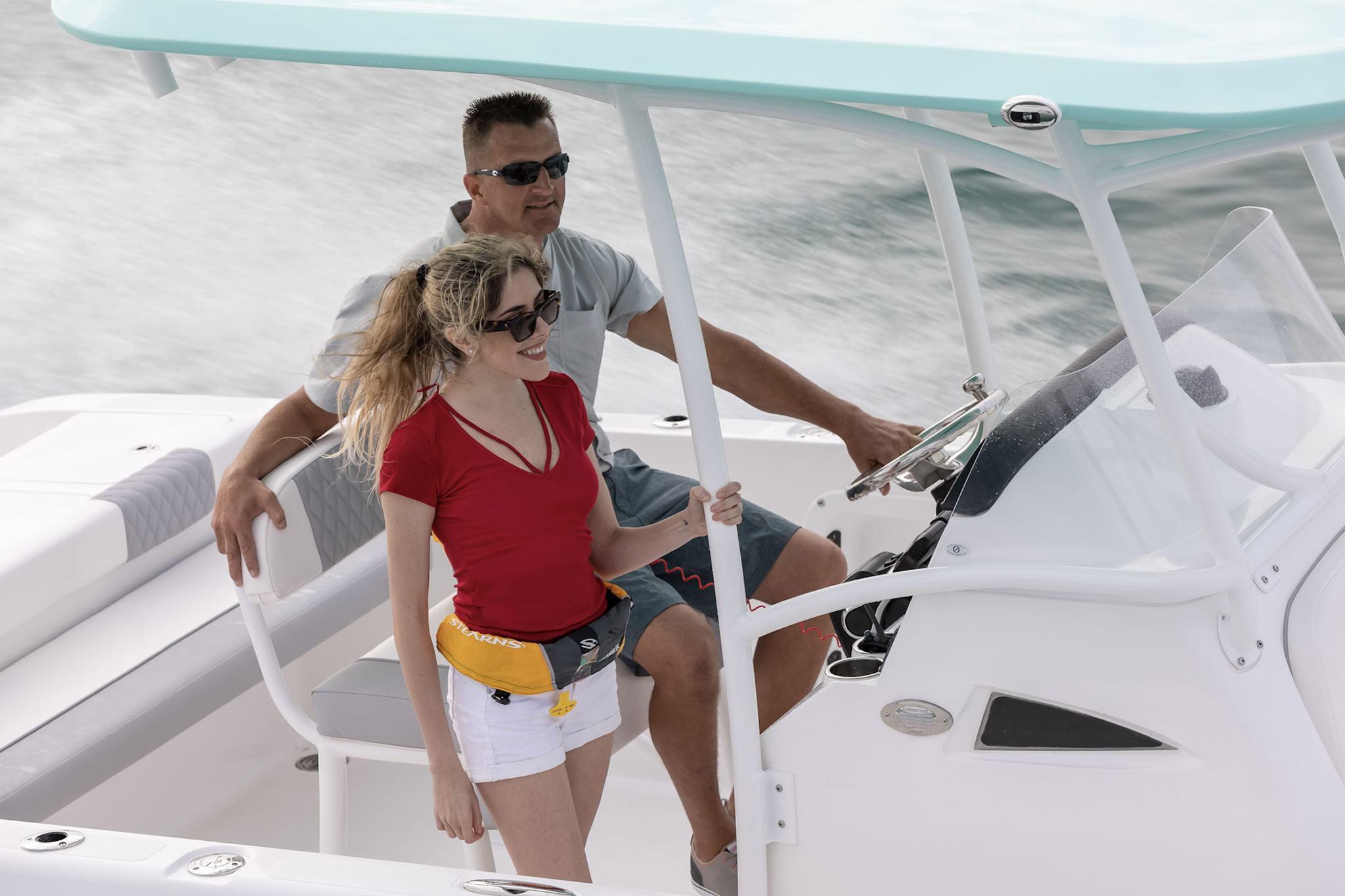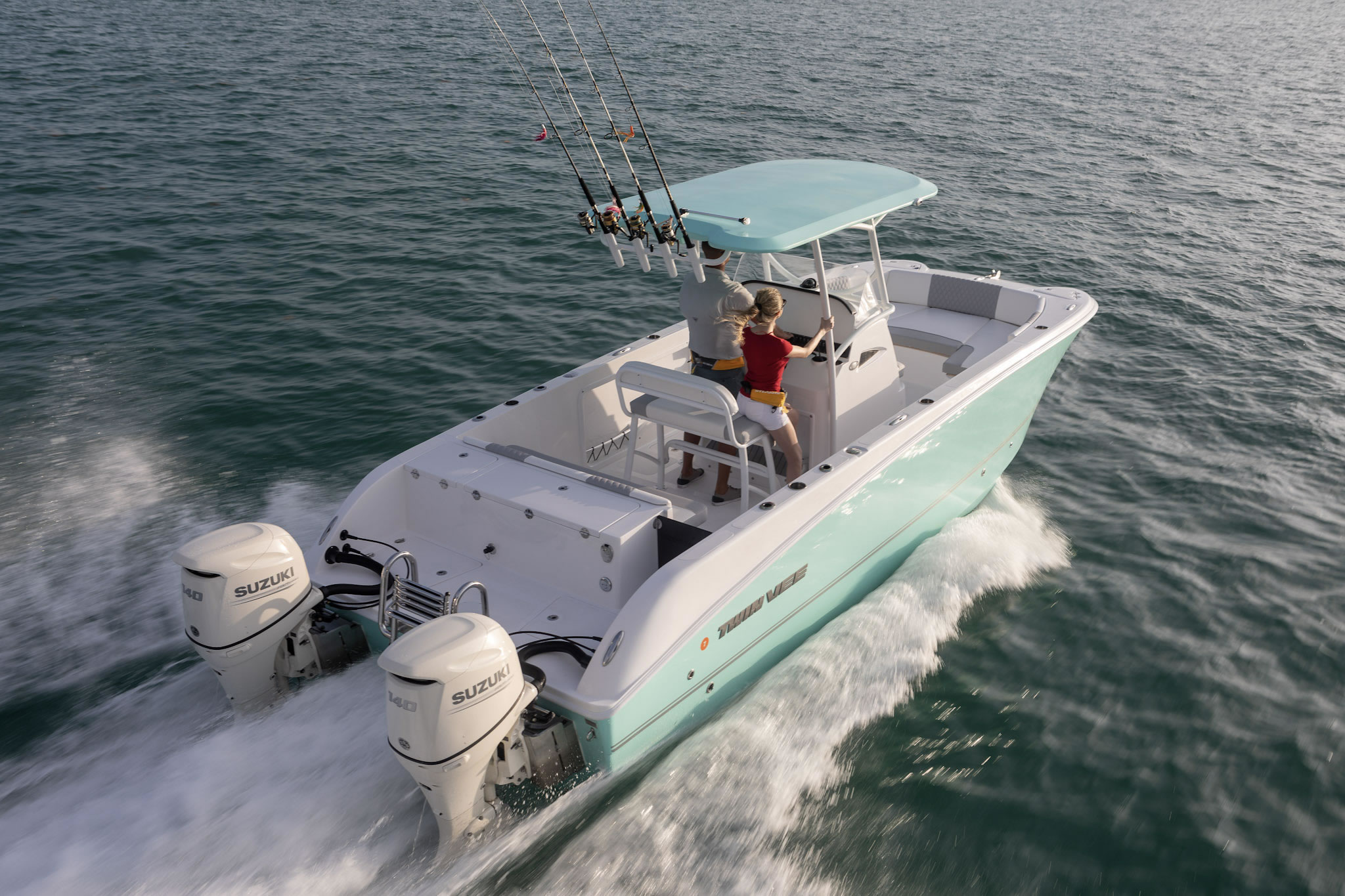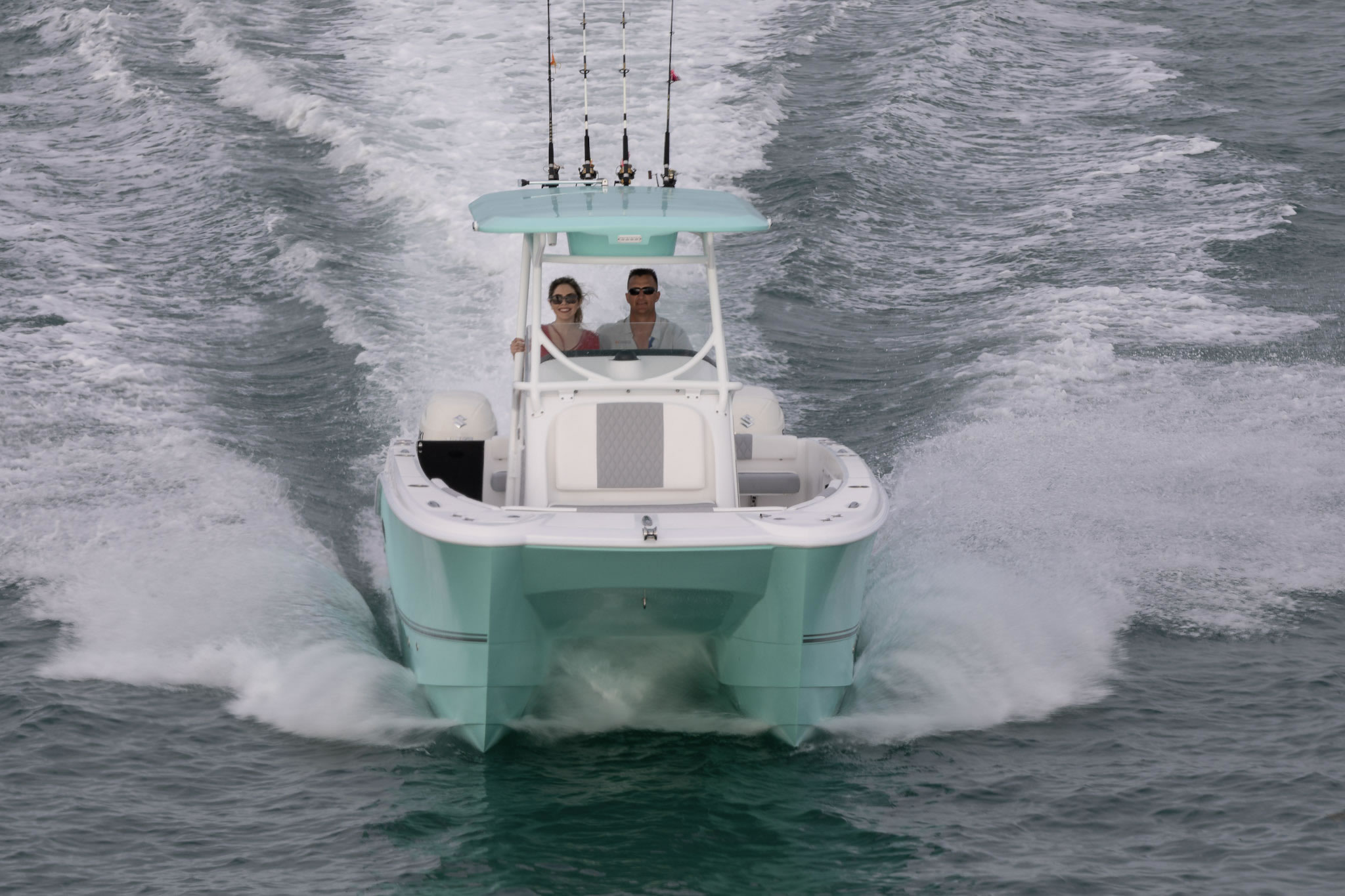The 22 BayCat Gets a Power Boost: Twin Vee’s 250HP Performance Test Results
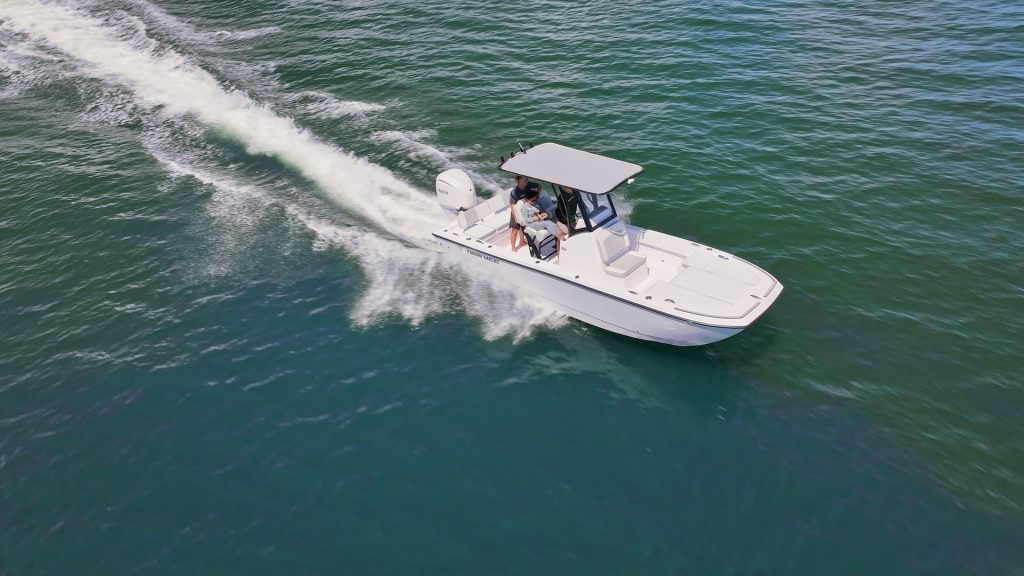
We put Twin Vee’s 22 BayCat bay boat to the test with Yamaha’s 250 horsepower F250XSB2, and the results speak for themselves. Fans have asked for more power on this 22′ dual hull boat, and this latest performance report confirms what our engineers and test crews already knew: the 22 BayCat handles the extra horsepower beautifully, with a performance curve that balances speed, fuel efficiency, and control.
Performance Overview
According to Yamaha’s official Performance Bulletin, the 22 BayCat reached 50.3 MPH at 6000 RPM, burning 24.4 gallons per hour at 2.06 miles per gallon. Even more impressive, the boat’s most efficient cruise came at 3500 RPM, running 25 MPH while sipping just 7.1 gallons per hour and delivering 3.52 miles per gallon.
These results were recorded under test conditions with:
- Four passengers onboard
- 30 gallons of fuel
- Two batteries, safety, and test gear
- Air temperature of 85°F and water temperature of 82°F
- Winds between 15–25 MPH
For context, the boat accelerated from 0 to 20 MPH in 3.9 seconds, showing strong hole-shot performance for a single-engine catamaran of this size.
Why This Matters
Until now, we have primarily offered the 22 BayCat bay boat with 150HP and 200HP power options.. While those configurations are ideal for inshore anglers and family cruising, the addition of a 250HP upgrade brings a new level of versatility and offshore capability.
For boat owners who fish larger bays or cross rougher open water, the higher horsepower opens up new possibilities without sacrificing efficiency. It also demonstrates how well Twin Vee’s hull design scales. Our kinetic fluid induction and unibody infused construction work hand in hand to maintain balance and control even as engine power increases.
Built for Performance and Strength

The 22 BayCat is not just about horsepower, it’s about how that power is managed. Every detail of its design reflects the same engineering principles that go into our larger offshore GFX2 boat models.
This model features:
- Infused unibody construction for strength and rigidity
- Twin hull design with a central nacelle that channels water to the prop, preventing cavitation
- In-deck fish boxes, a feature rarely found on a bay boat
- Dual live wells and Garmin-ready electronics options up to 12 inches
- Pre-wiring for power poles and trolling motors
- Three-sided tempered glass windshield and integrated T-top options in aluminum or fiberglass
Every 22 BayCat is built using a vacuum infusion process. This is a technique typically reserved for high-end offshore boats. This ensures precise resin-to-glass ratios for consistent weight and structural integrity from hull to console. It’s the same manufacturing discipline used on our flagship 400 GFX2 and every other boat in our lineup.
As Vice President and Director of Product Development Preston Yarborough explains, “A boat, motor, and trailer package under $100,000 is typically not made this way. This is how you’d build a two or three-hundred-thousand-dollar boat.”
Real-World Testing and Factory Insights
Twin Vee’s team has spent years refining the single-engine catamaran concept. A single-engine boat with two hulls are notoriously difficult to design due to water flow variations in the tunnel, but the 22 BayCat’s central nacelle and optimized hull geometry deliver consistent thrust and stability.
As Yarborough describes it, “Imagine two canoes in the water, now try to make one engine push both evenly. It took over a year of design, testing, and retooling to get this right.”
During test runs in late September off Fort Pierce, Florida, the 22 BayCat with the Yamaha 250HP saw some chop and winds up to 20 MPH. After over a week of constant thunderstorms, the skies had cleared and only the light remnants of the storm were left. Which are ideal conditions to measure how the boat would perform in real-world coastal waters rather than a flat calm and clear waters. Twin Vee’s engineering, quality control, and production leads were on board, reviewing acceleration curves, prop performance, and steering response at varying trim settings.
Factory-Backed Quality
Performance data means little if it can’t be repeated. That’s why every 22 BayCat that leaves our Fort Pierce facility is built under the same controlled vacuum infusion and quality inspection standards used in this test.
From wiring harnesses with Deutsch connectors and silicone gaskets to bonded grounding loops that prevent corrosion, every detail is considered. Our electrical harnesses are built as complete systems, not improvised in place. Each wire is labeled, Deutsch-connected, and sealed with silicone gaskets to eliminate corrosion points. That means a dealer or owner can swap a pump or switch without rewiring the boat. It’s plug out, plug in, and go.
Each fiberglass part is CNC-cut, hand-laid, and infused for maximum precision. Core materials are hand-placed according to a laminate schedule that maps the strength of each area. Higher density core in the transom and multi-axial knitted cloth along the running surface. That level of material control not only reduces weight variation between boats, it guarantees consistent hull stiffness that translates directly to performance.
Twin Vee’s production team ensures quality control through every stage, from mold building to final assembly.
Key Takeaways from the 250HP Test
| RPM | Speed (MPH) | GPH | MPG |
|---|---|---|---|
| 3500 | 25.0 | 7.1 | 3.52 |
| 4000 | 30.1 | 9.8 | 3.07 |
| 5500 | 45.5 | 20.7 | 2.20 |
| 6000 | 50.3 (Top Speed) | 24.4 | 2.06 |
The combination of speed, fuel economy, and smooth handling underscores what Twin Vee set out to achieve—a bay boat that performs like a cat, with efficiency and confidence at any RPM.
The Verdict
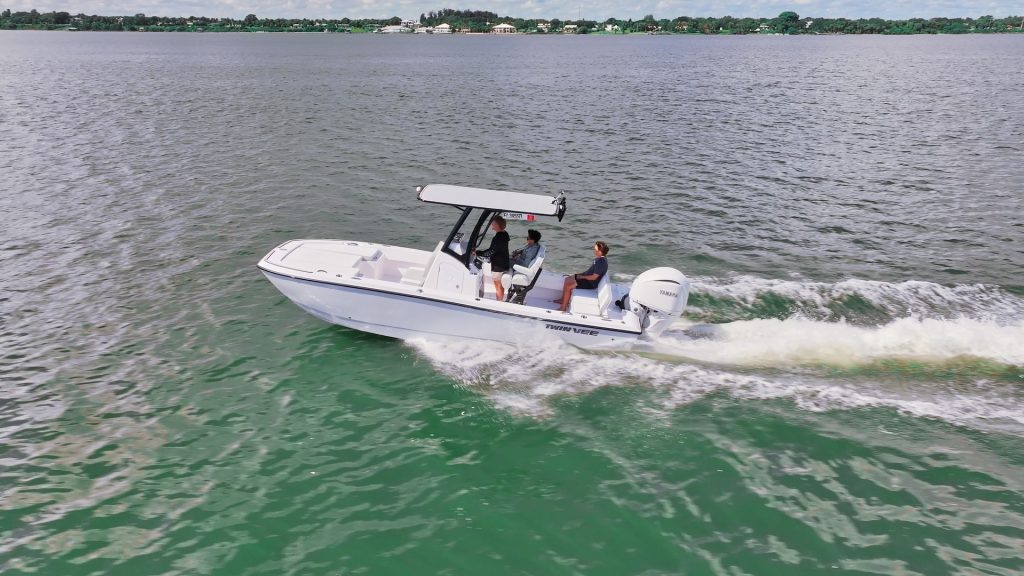
With Yamaha’s 250HP powering the 22 BayCat, Twin Vee has created a compact, high-performance catamaran that runs like a much larger boat. The efficiency numbers at cruise are exceptional for a 22-footer, and the top speed near 50 MPH makes it a serious contender for anglers and adventurers who want to cover more water faster.
This test confirms what many in the Twin Vee community suspected: the 22 BayCat isn’t just back; it’s better, stronger, and faster than ever.


